Málaga are cele doua elemente esentiale care ma atrag dintotdeauna: marea si cladirile cu arhitectura superba andaluza. Pot petrece ore in sir privind si ascultand marea sau privind si admirand detaliile de design si decor ce impodobesc casele. Ajunsa acolo, s-a adaugat si al treilea: spectacolul flamboaiant, splendid si surprinzator vazut intr-o seara de mai la Teatro Cervantes: Ballet Flamenco de Andalucía.
Málaga is one of the oldest cities in the world, founded in the 8th century by the Phoenicians. Today, art is everywhere – you can experience exhibits dedicated to glass and crystal, contemporary installations, and, of course, the works of Picasso, who was born here. Wander among banana trees and beautiful fountains as you walk through Paseo del Parque, and then hit the old city to quench your thirst at a Spanish tavern. You’ll be amazed by chic boutiques, gastro bars and cool cafés alongside the traditional taverns in the winding lanes in the heart of the city, while the waterfront has been developed with a white, architectural masterpieces promenade Palmeral de las Sorpresas, bars, restaurants and shops – new cultural centers include the superb Malaga Museum, the Russian Museum and Malaga Pompidou Centre. Although there is plenty to see and do, Malaga is really a place to kick back and just enjoy the laidback Mediterranean vibe.
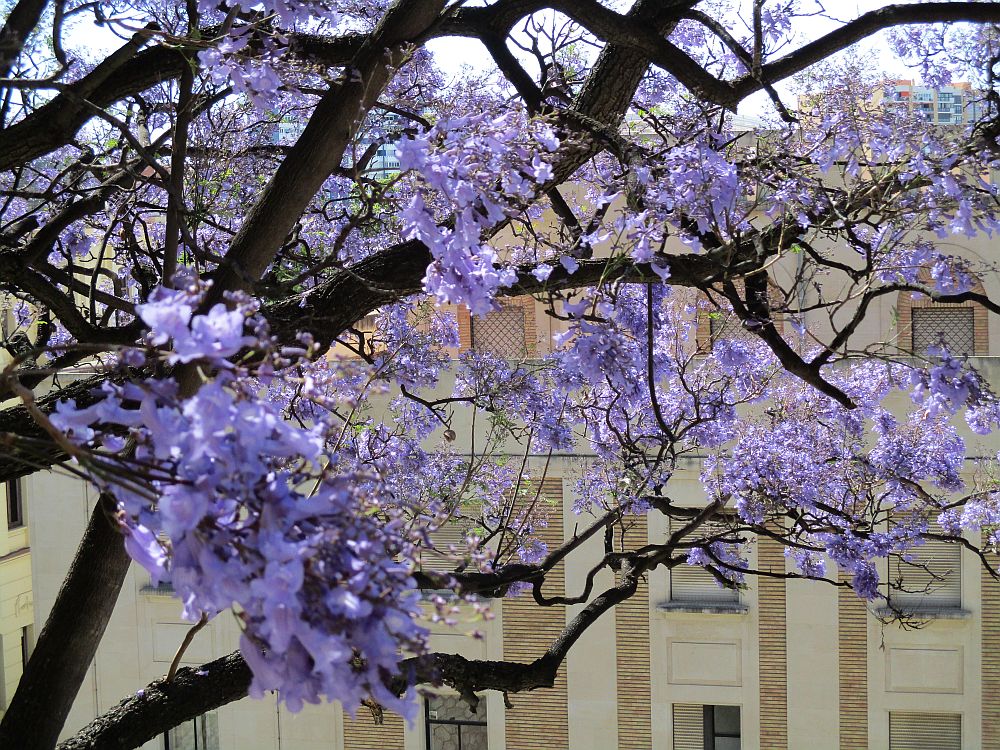
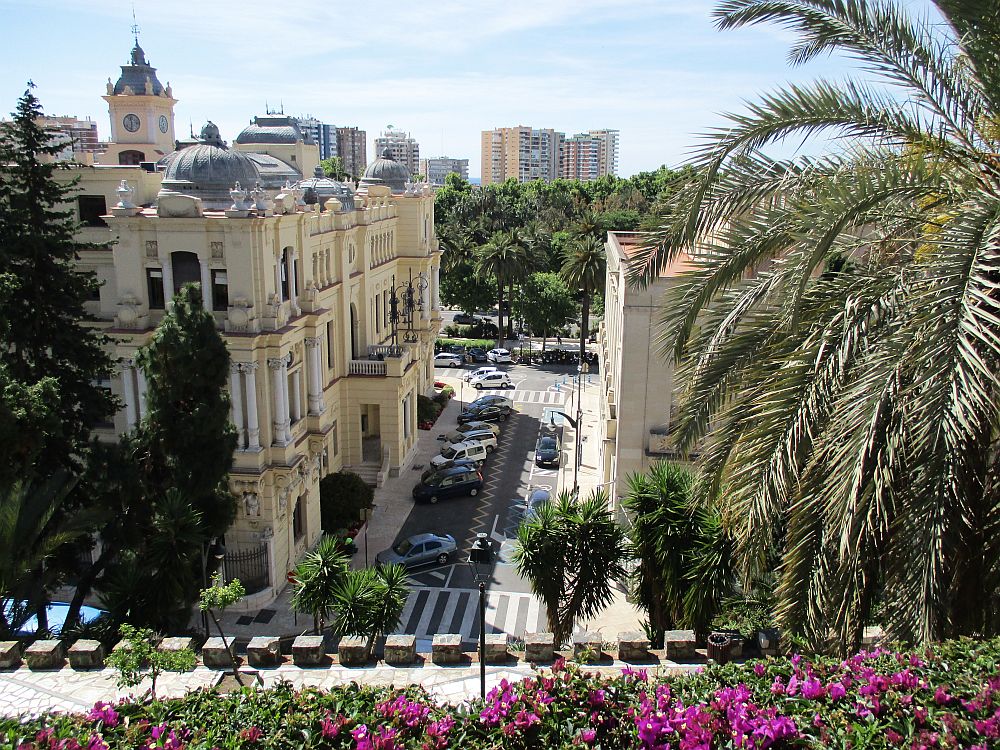
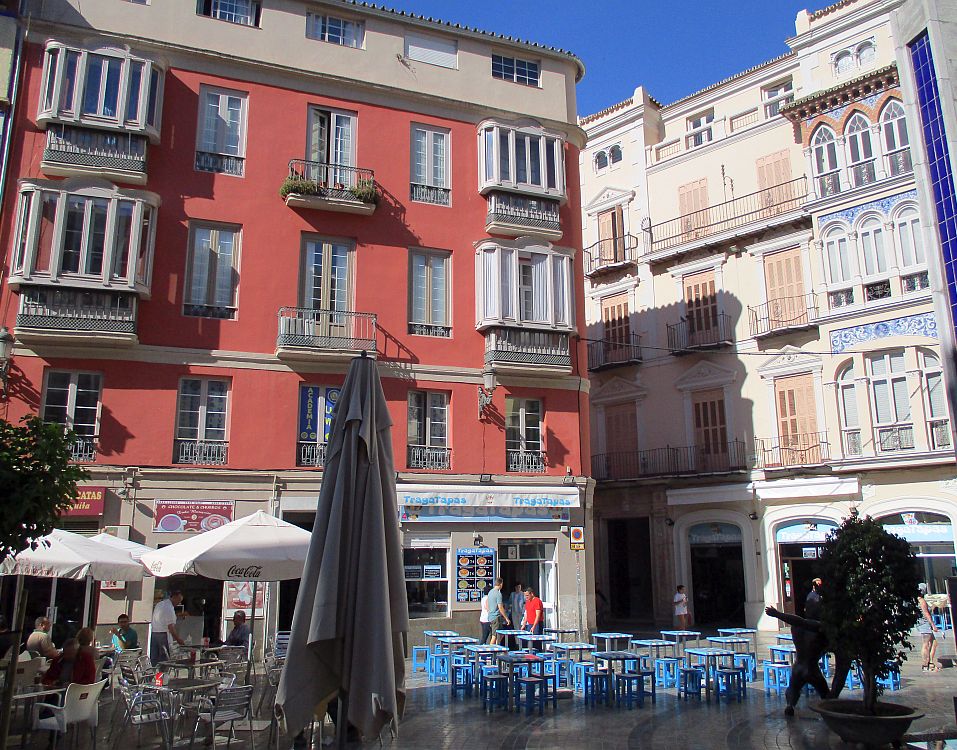
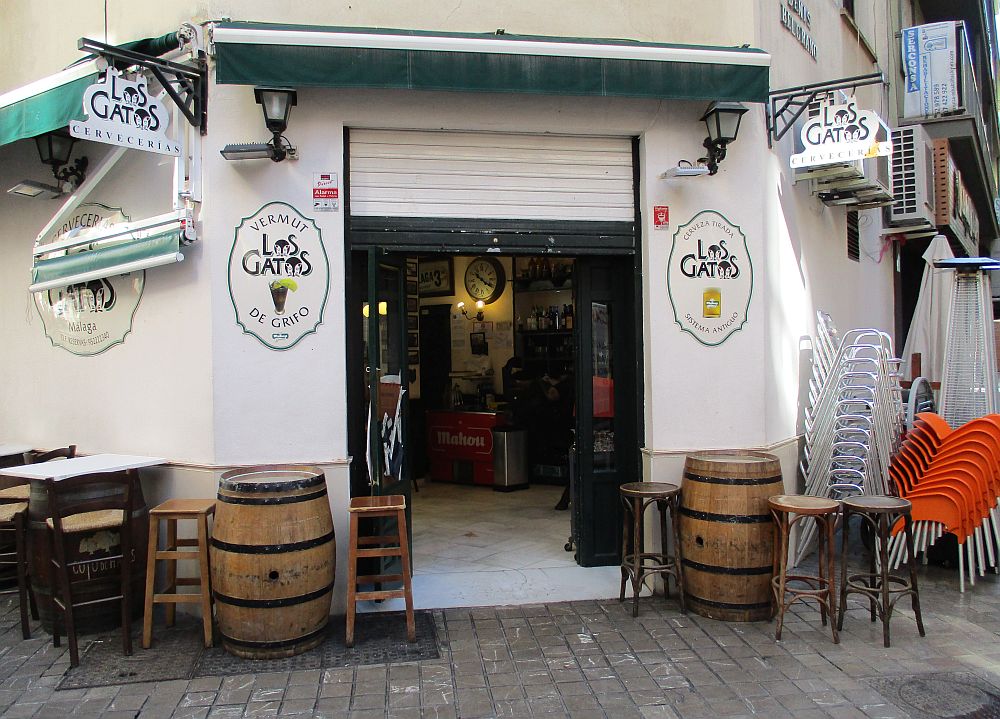
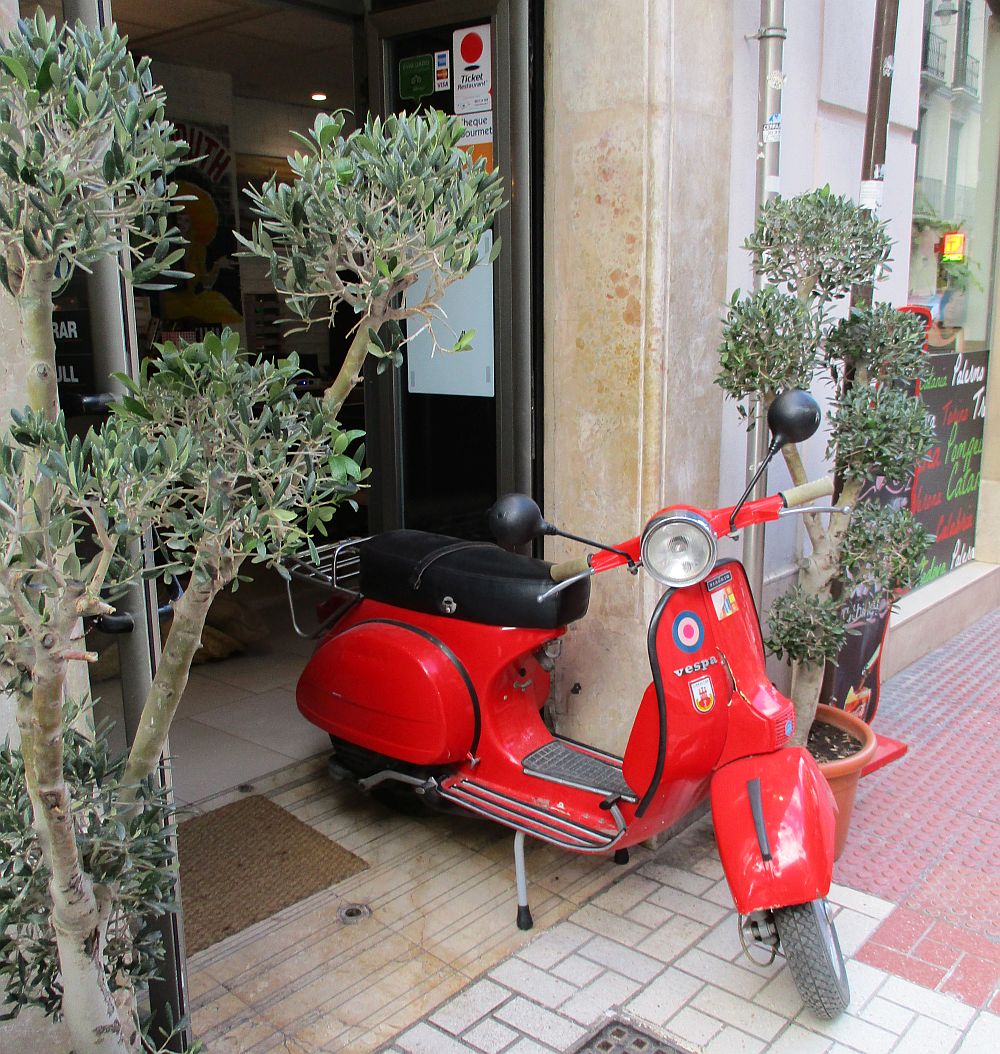
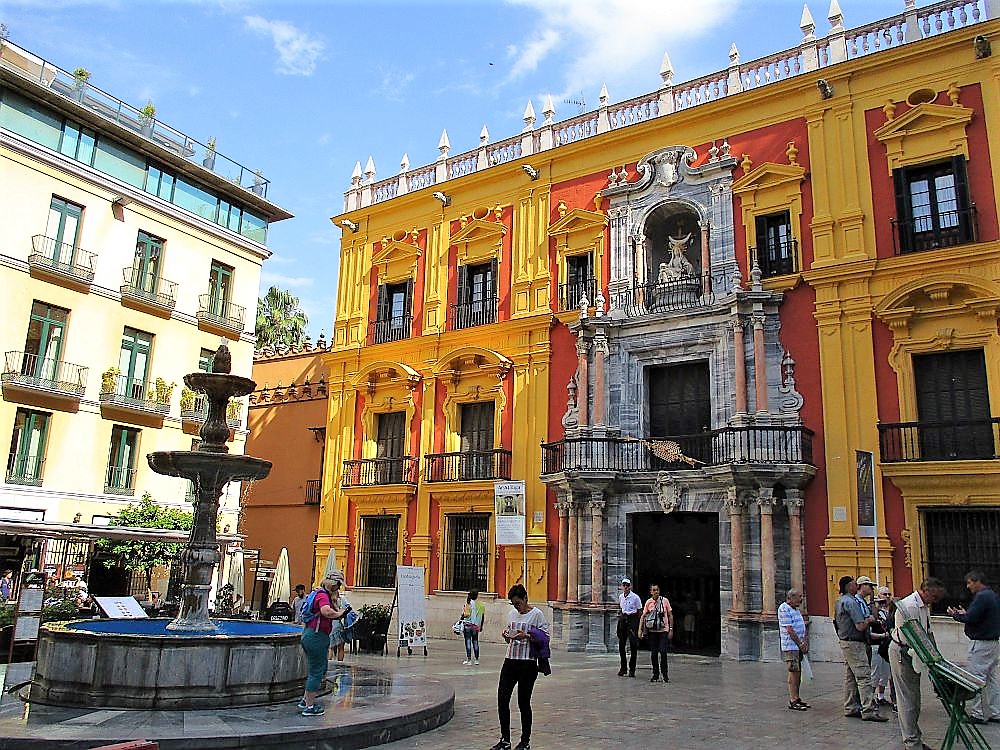
The Episcopal Palace
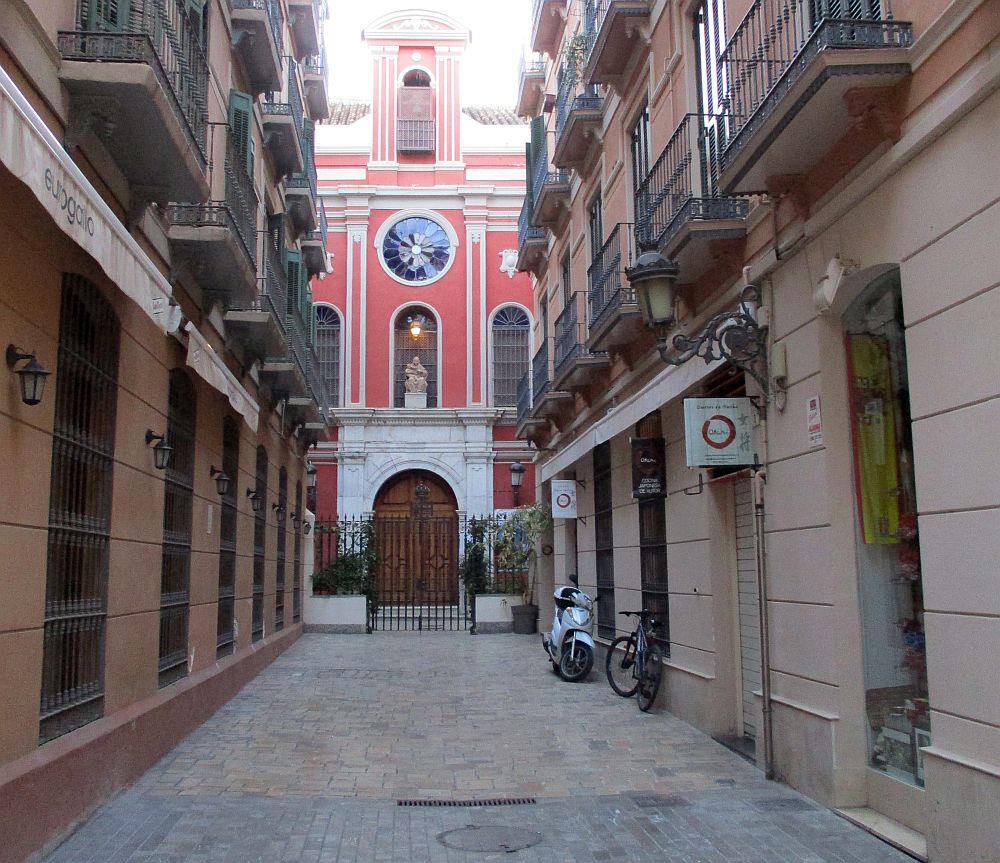
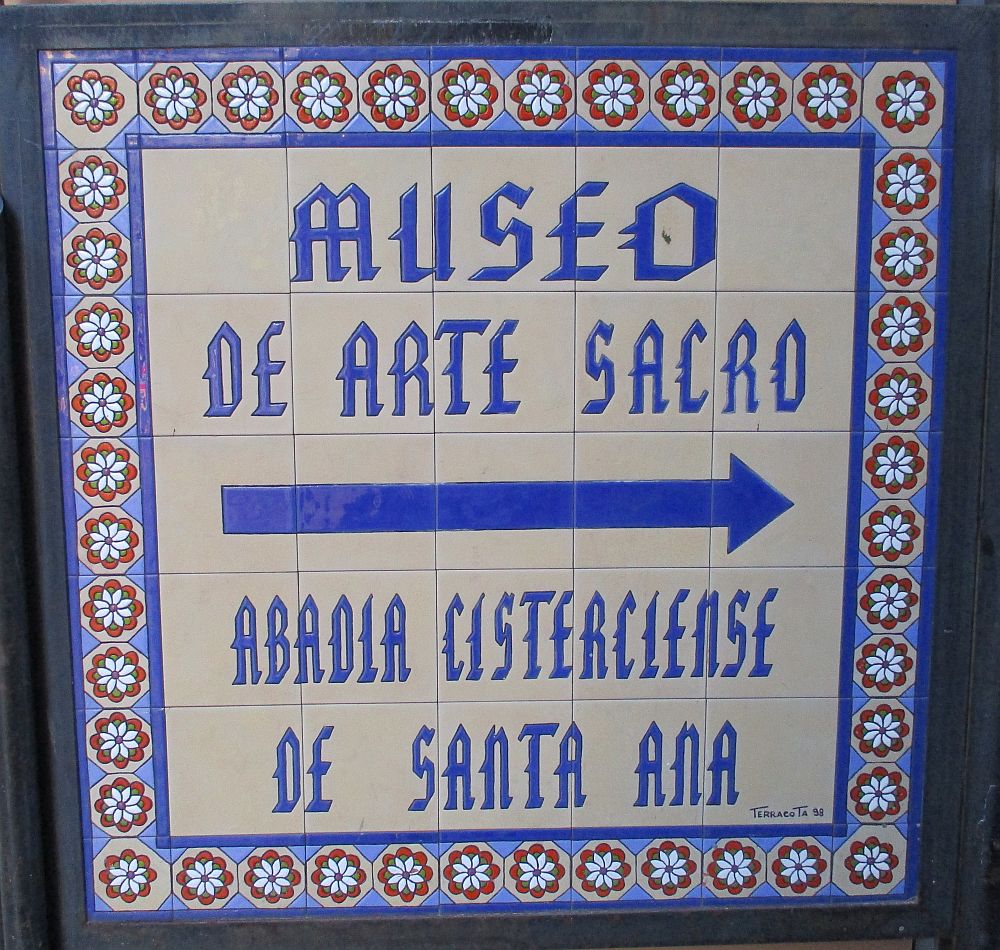
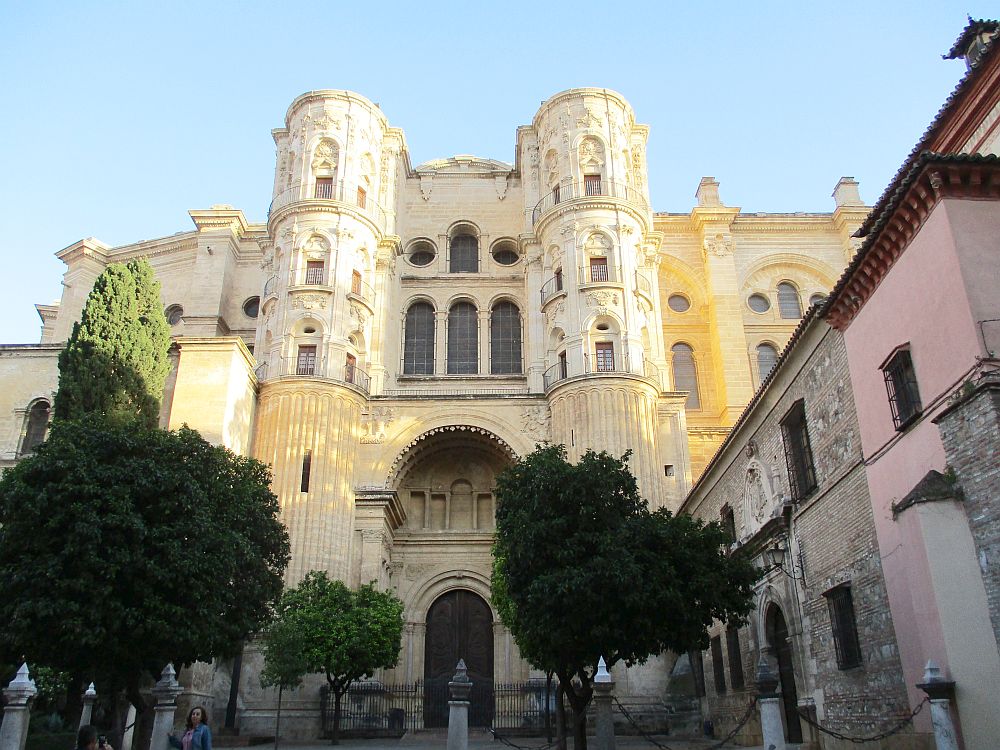
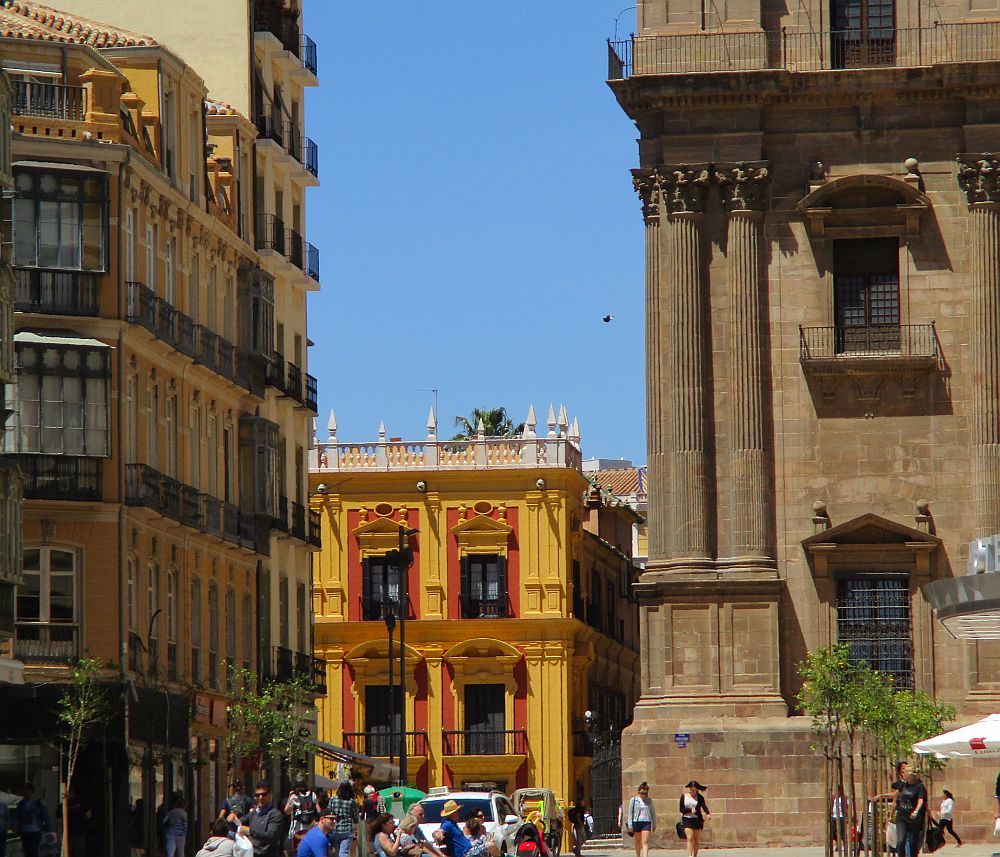
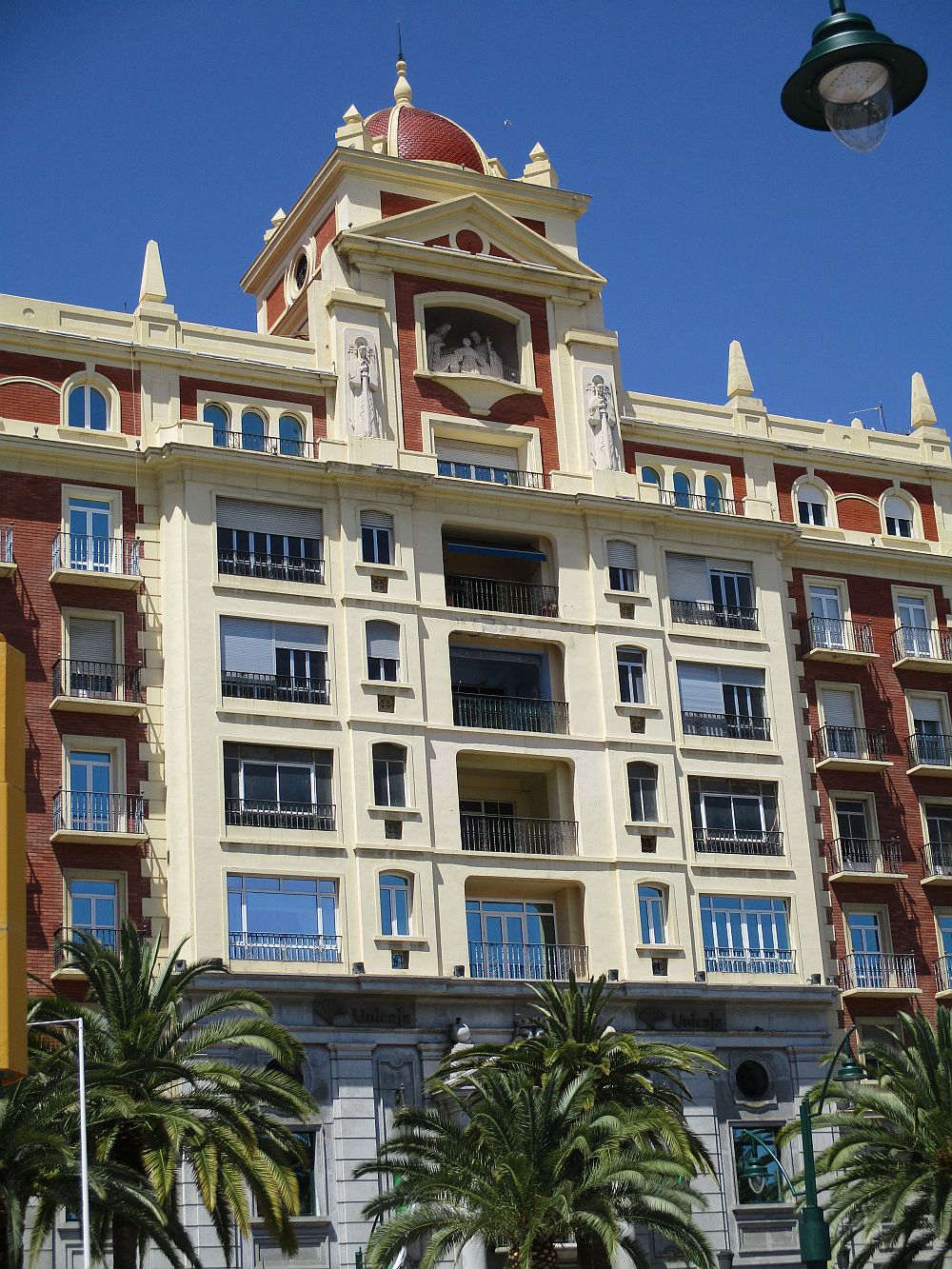

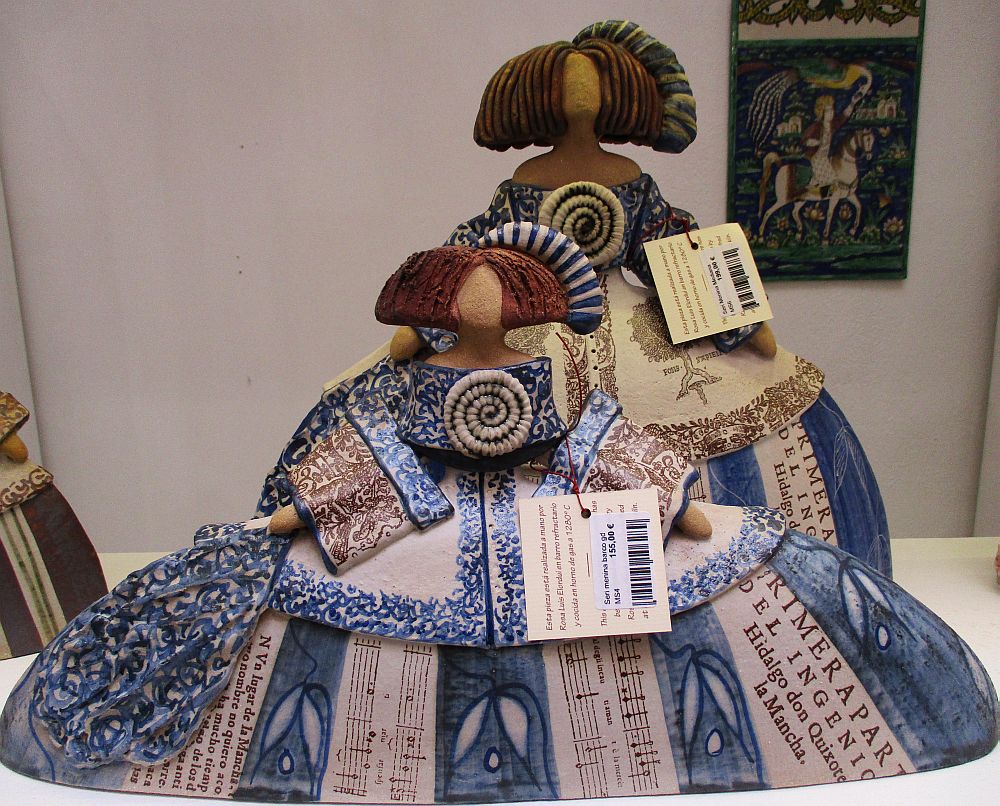
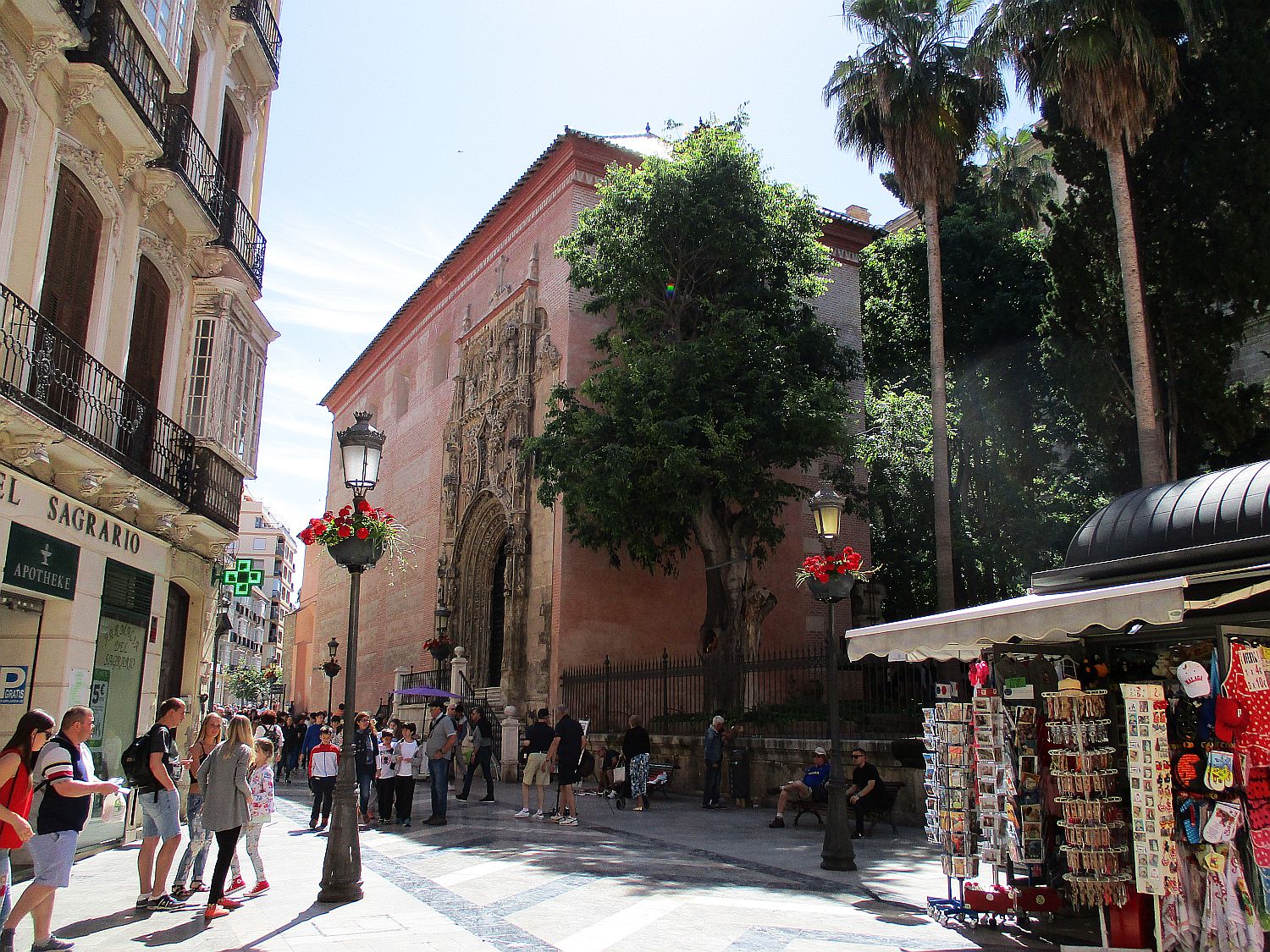

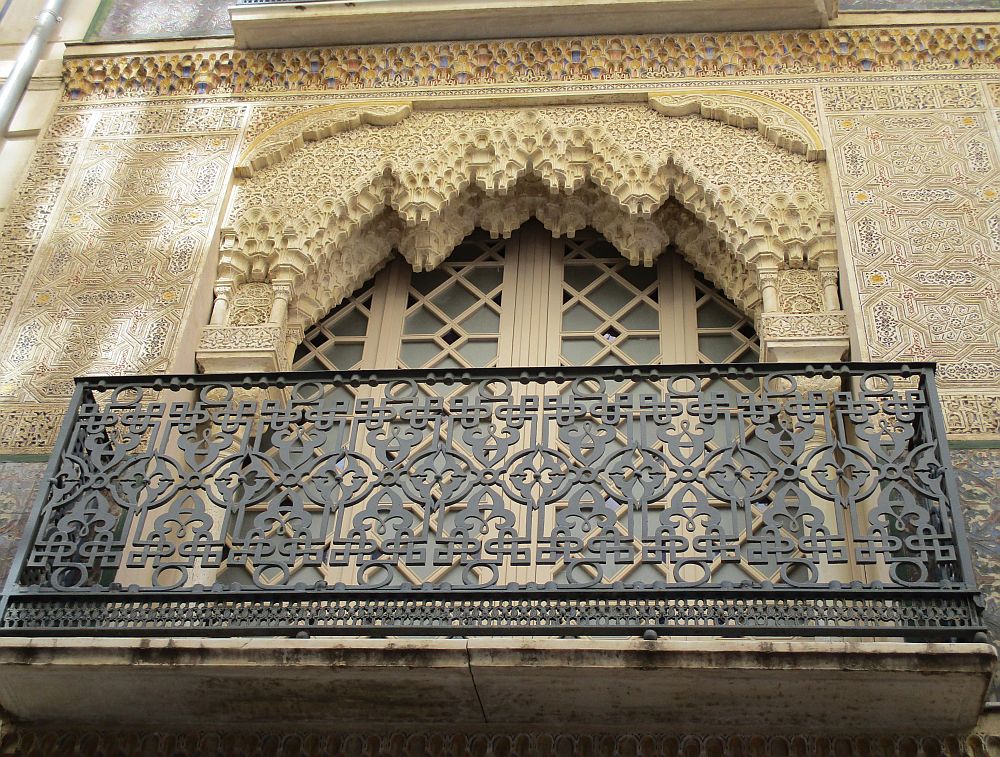

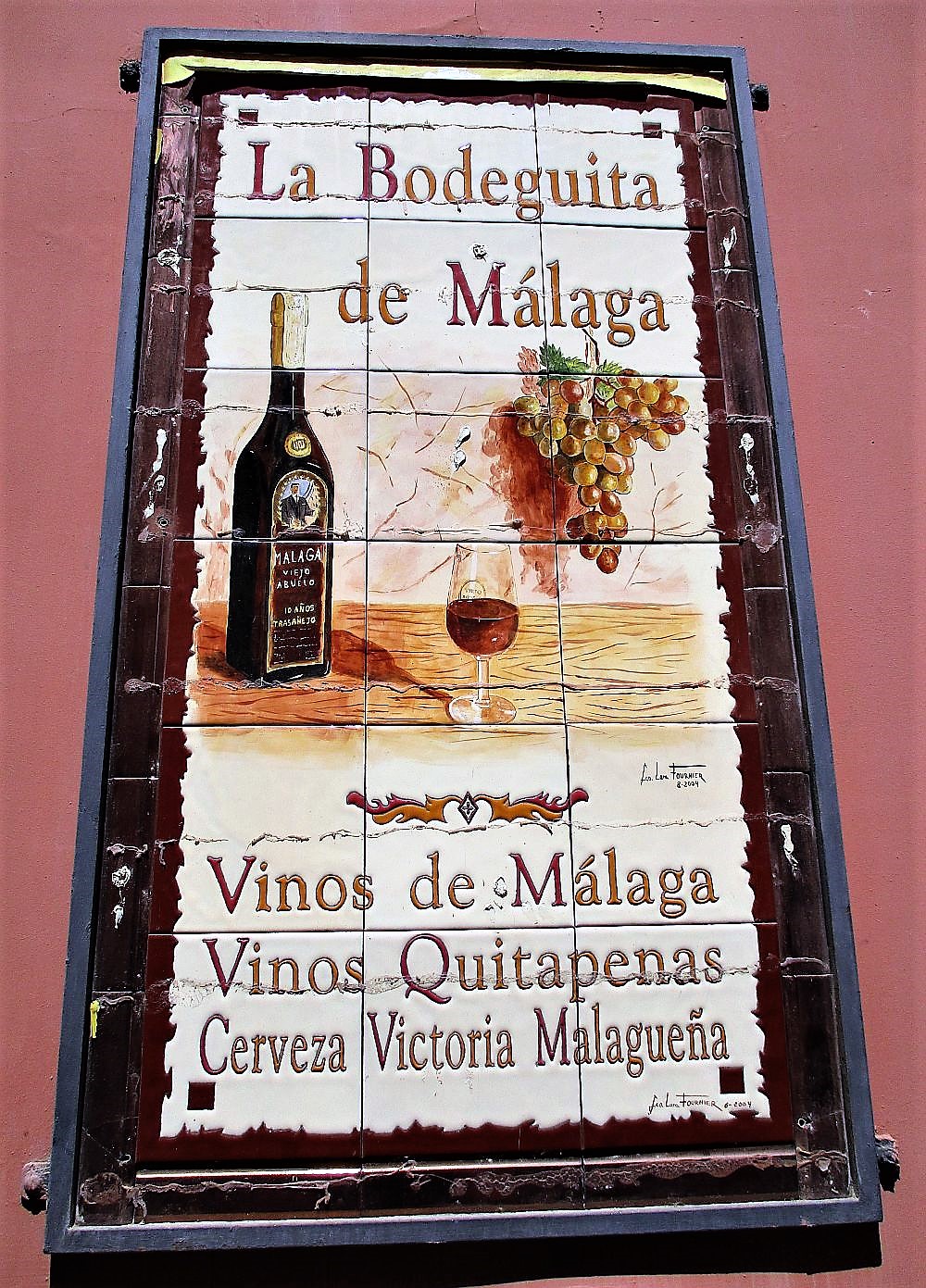
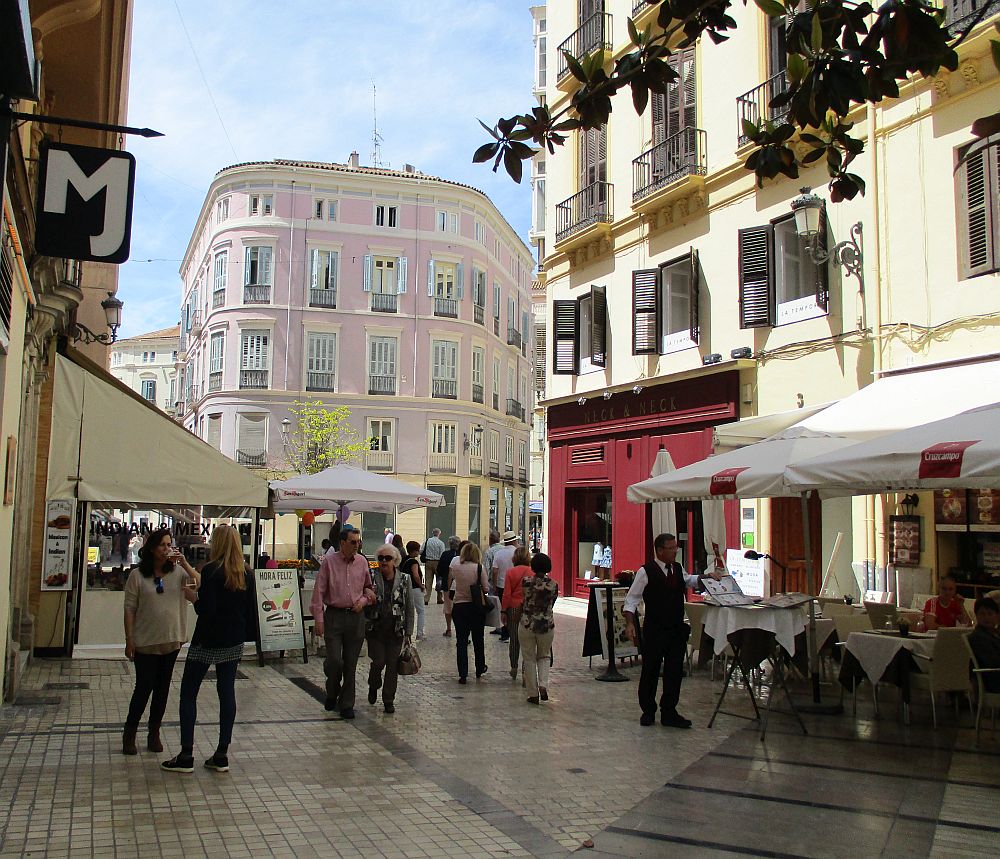
The unmissable Museo Picasso Málaga in the city of Picasso’s birth provides a solid overview of the great master and his work, through 200-plus works in the collection.
Málaga’s Cathedral was started in the 16th century on the site of the former mosque. Of the mosque, only the Patio de los Naranjos survives nowadays, a small courtyard of fragrant orange trees. Inside, the fabulous domed ceiling soars 40 meters into the air, while the vast colonnaded nave houses an enormous cedar-wood choir. Aisles give access to 15 chapels with gorgeous 18th century pieces and religious art. It’s worth also taking the guided tour up to the roof, to enjoy panoramic city views.
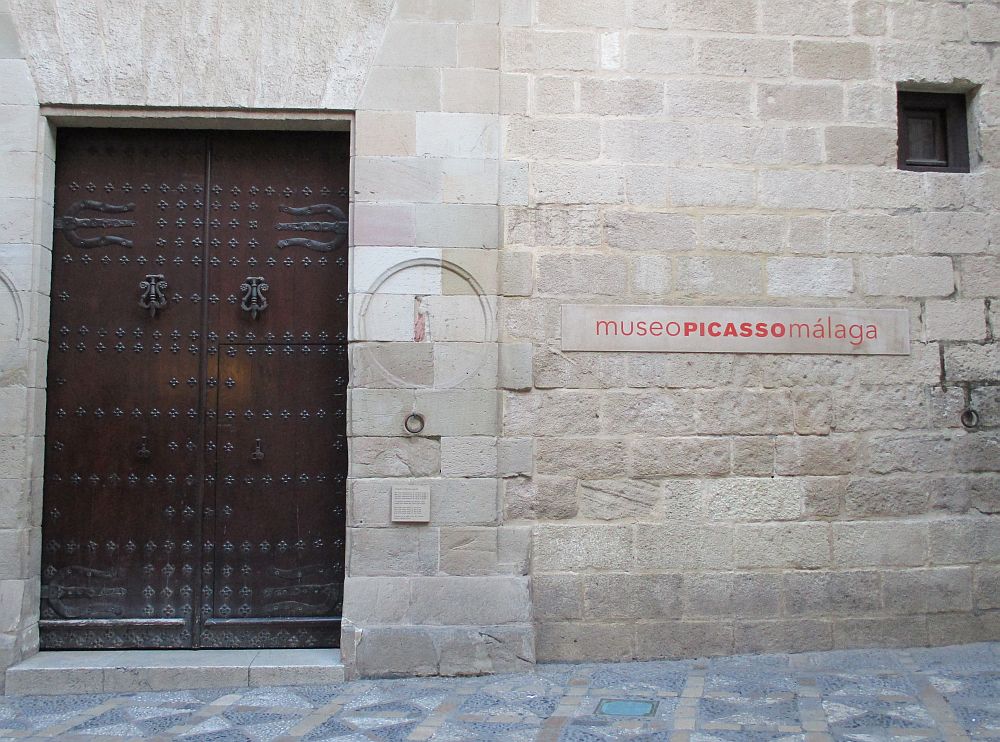
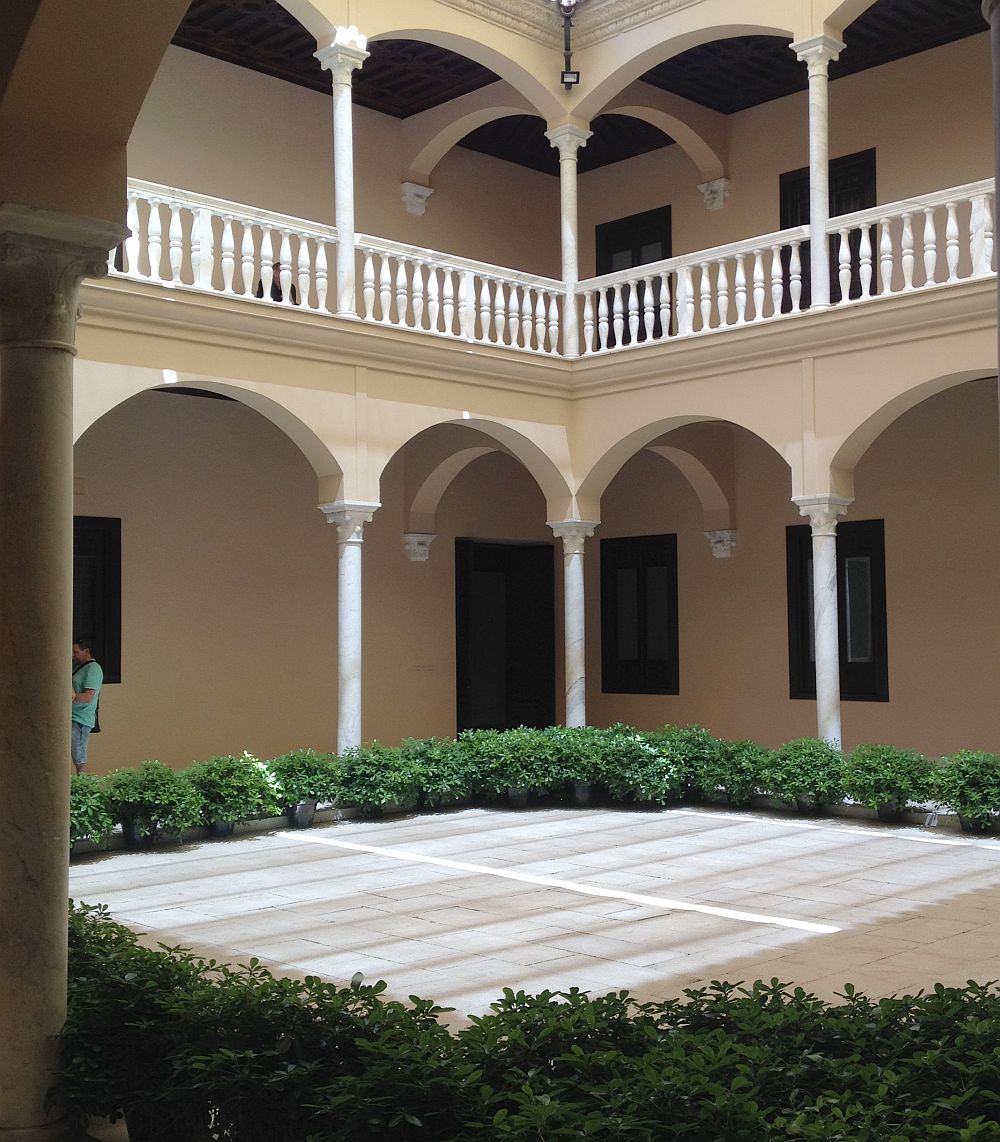
The interior court from Museo Picasso
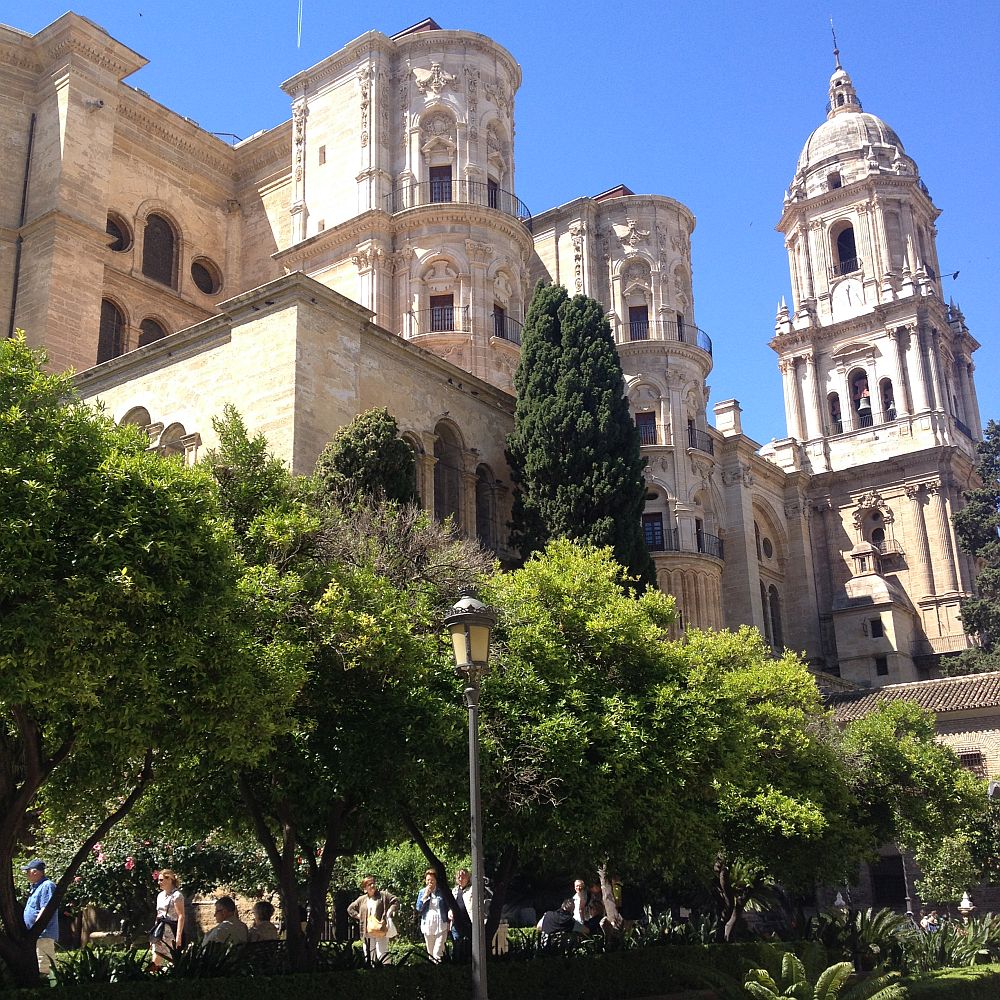
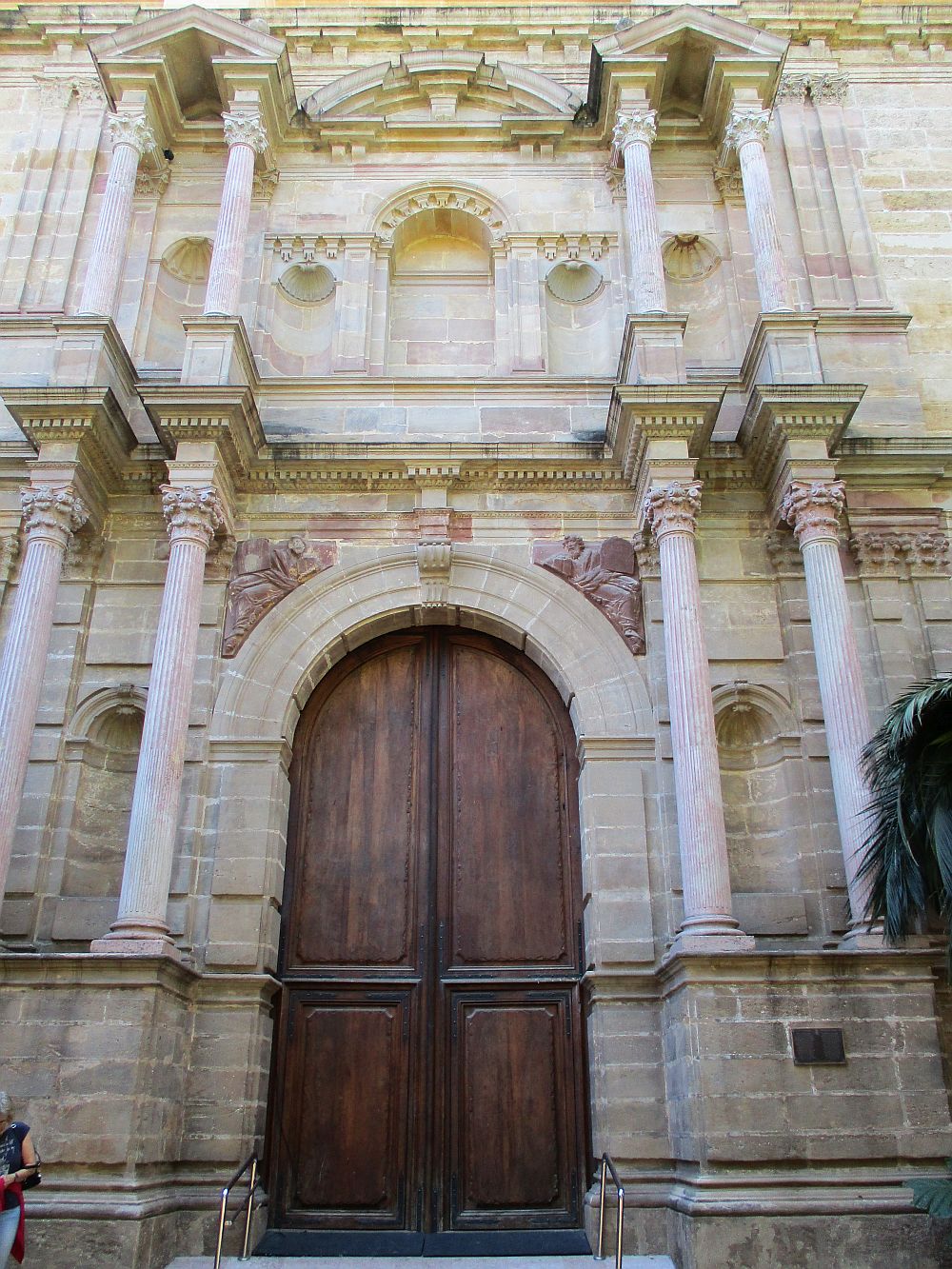
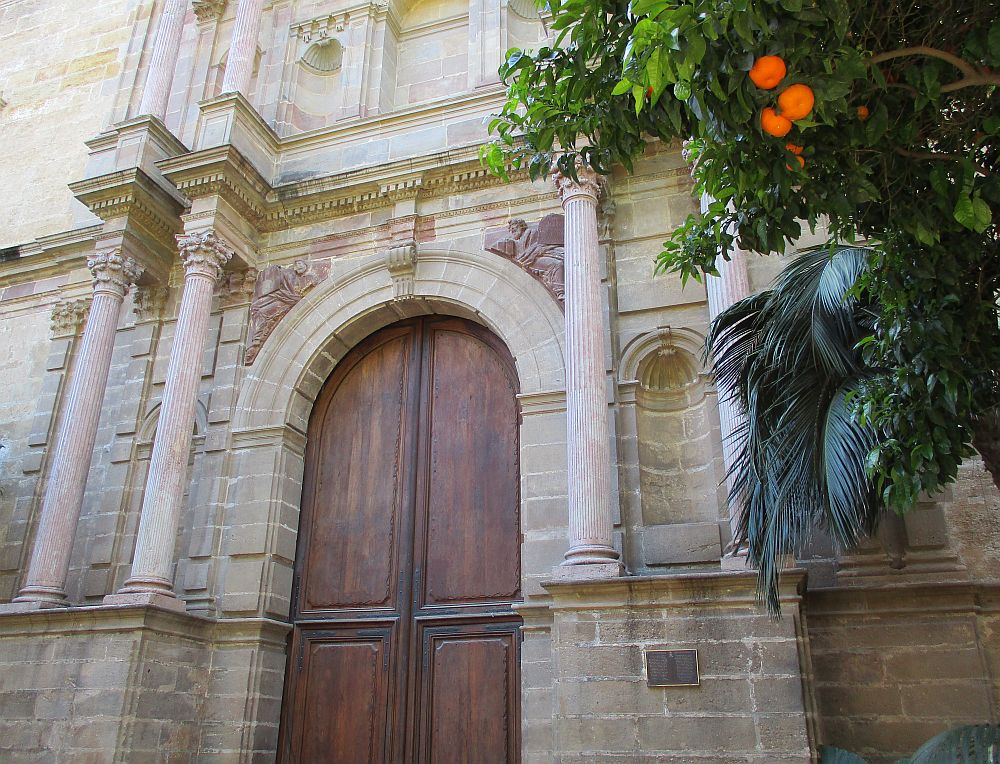

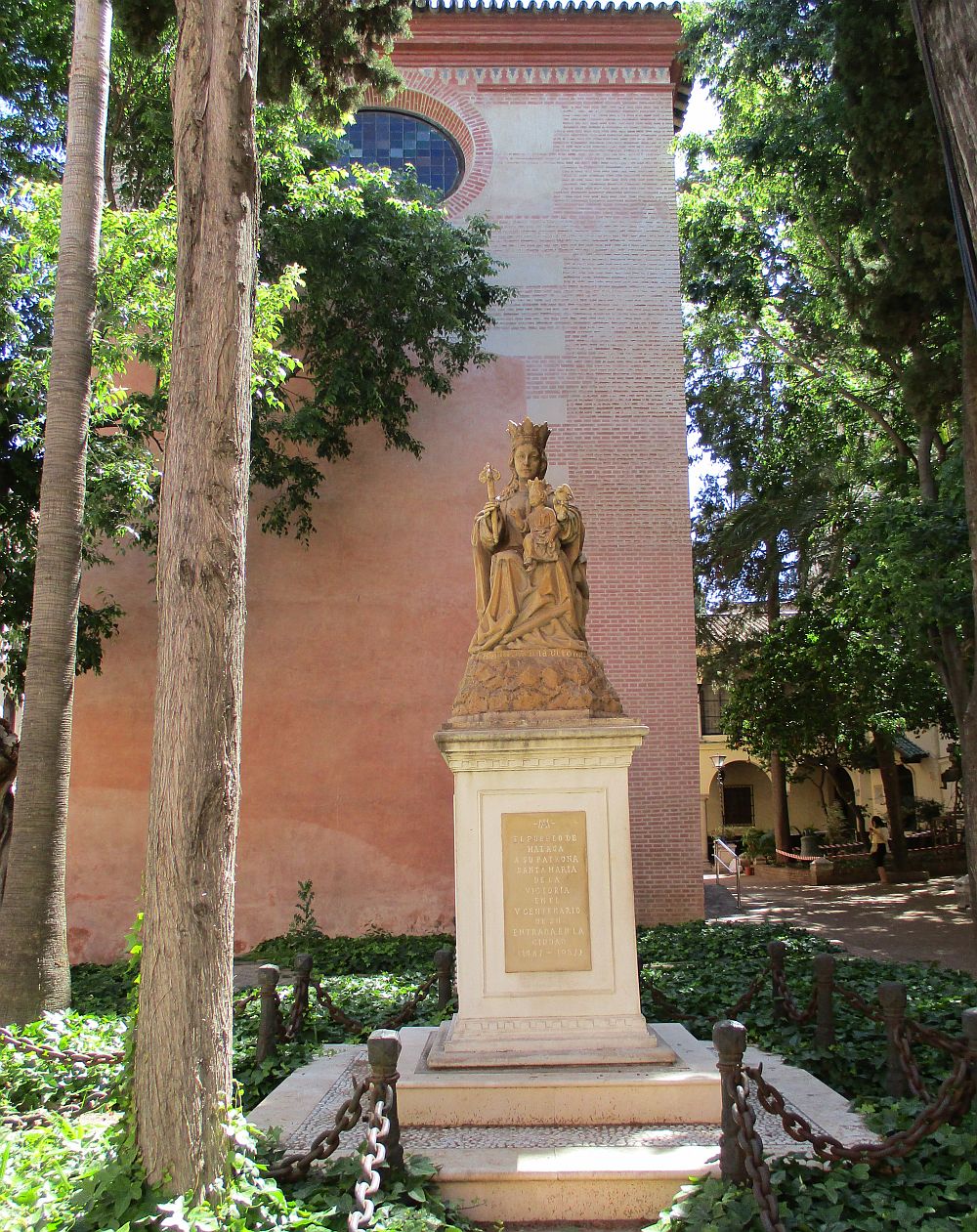
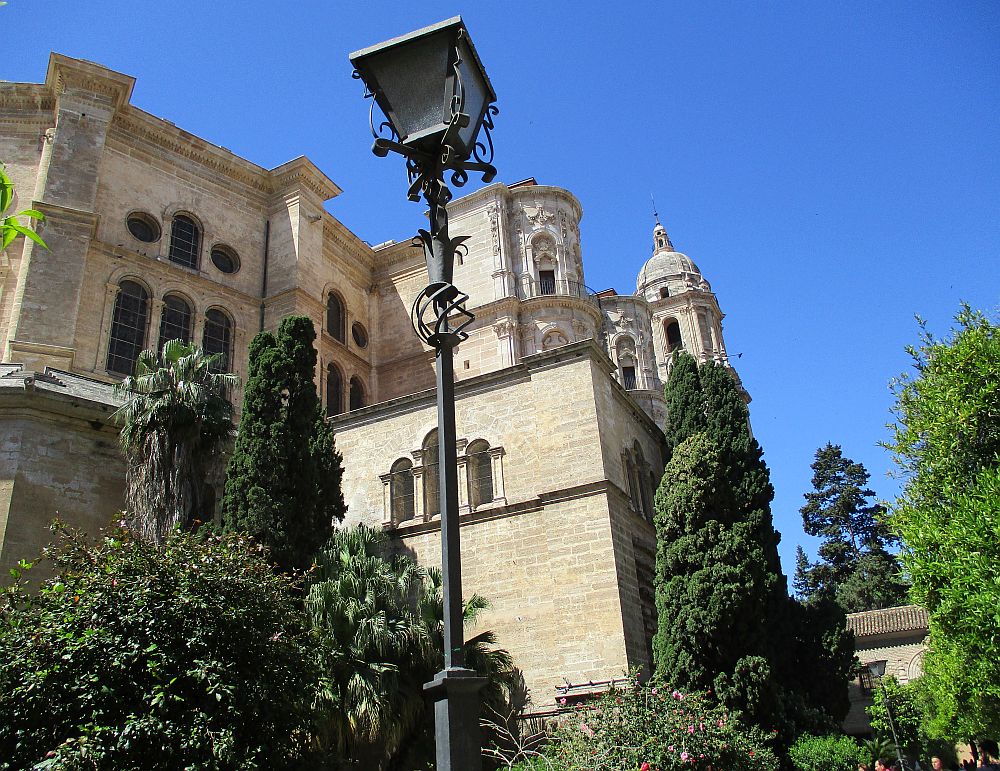
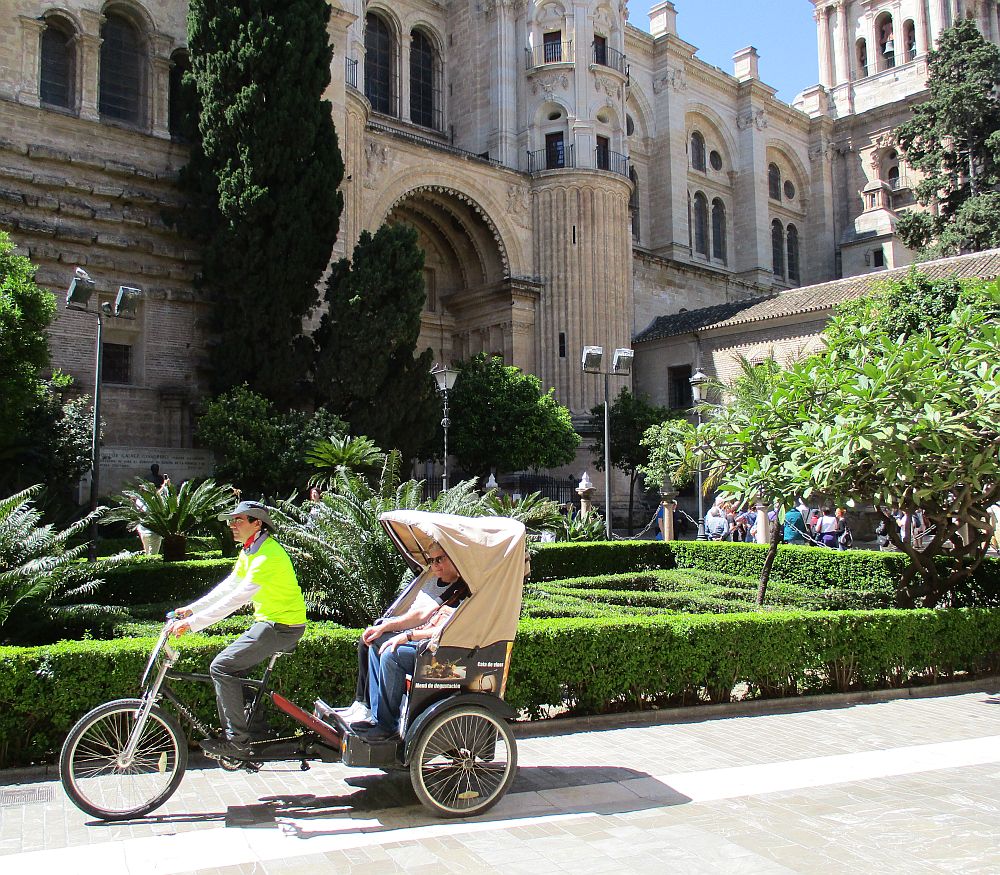
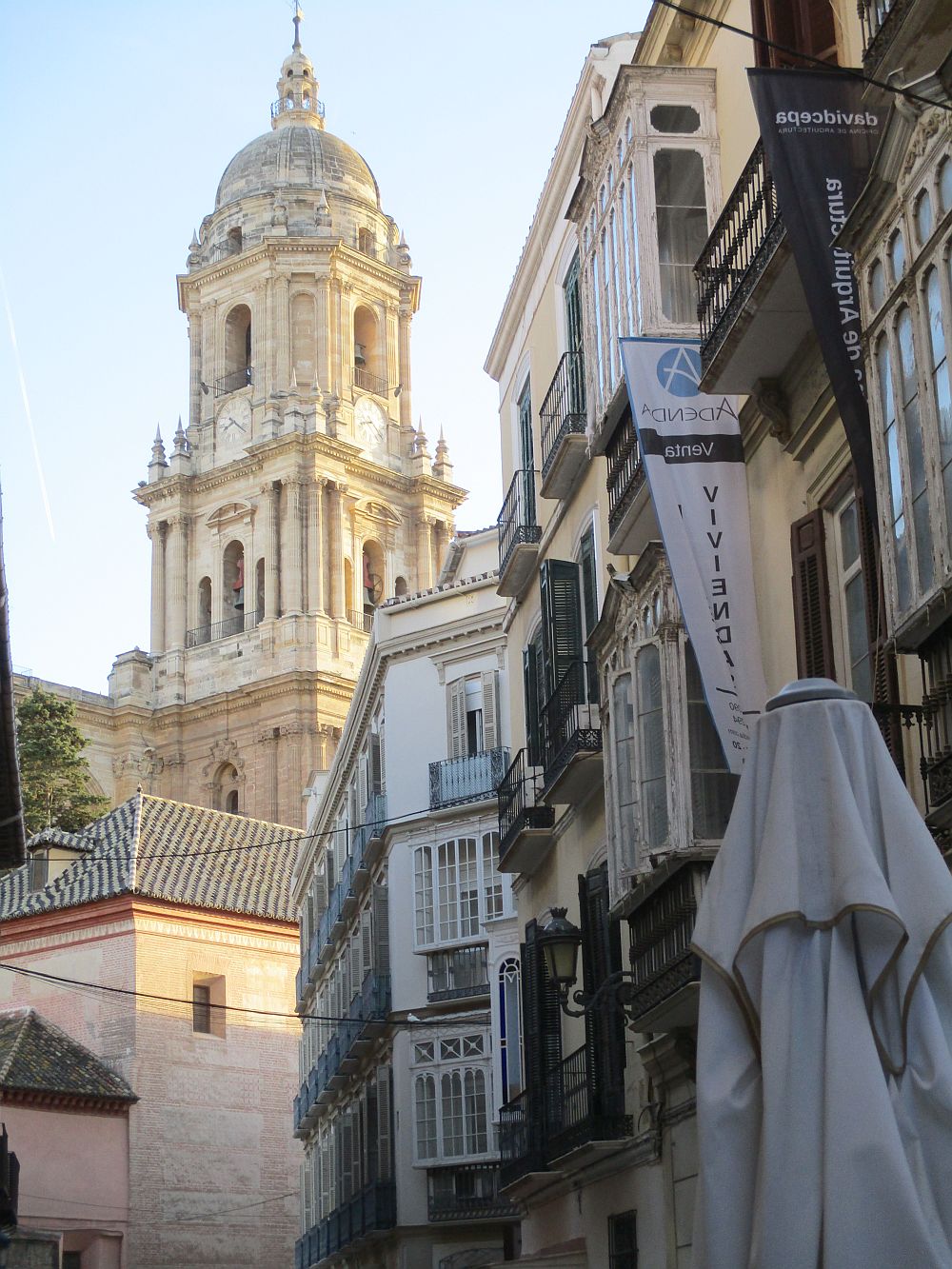
Then I just loved to enjoy a coffee near the cathedral, at retro-pinkish Cafeteria El Jardin, contemplating the ancient walls of the cathedral and the luxuriant vegetation from the nearby garden. In the next days, we discovered just across the street El Pimpi, which quickly became our new favorite place, for lots of churros e chocolate in the morning and gourmet selection of tapas and wines in the evening, in the decor of huge red over-sized polka dots cups filled with geraniums.
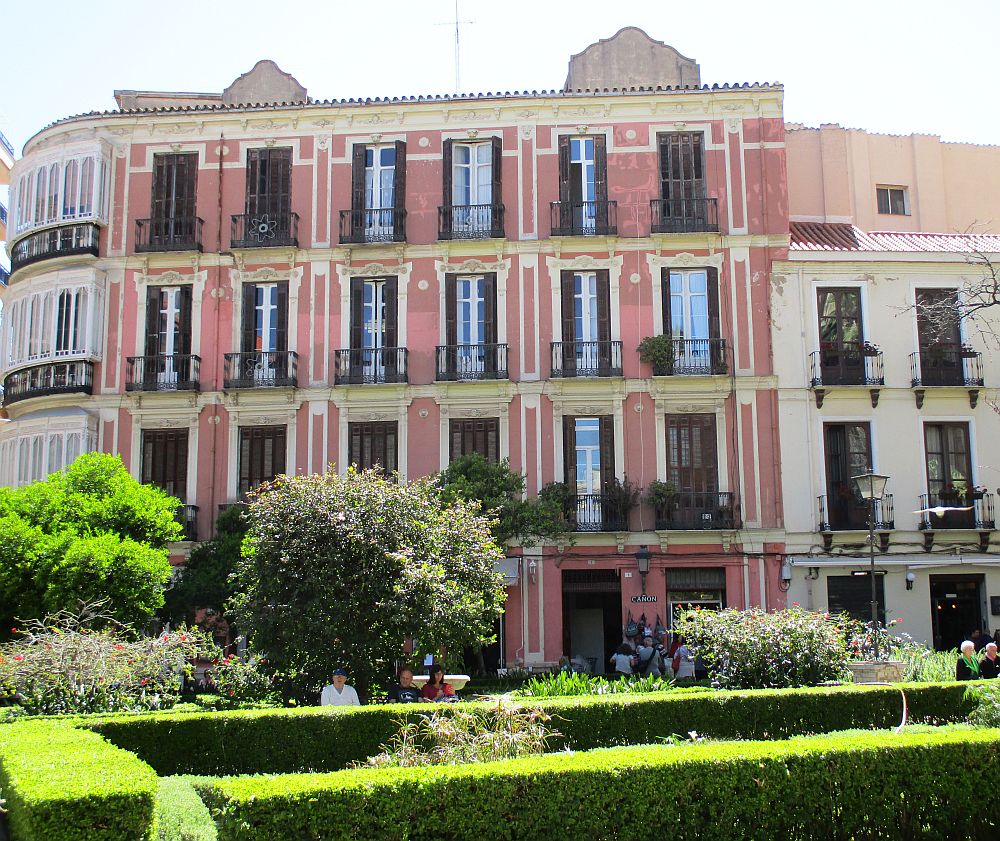
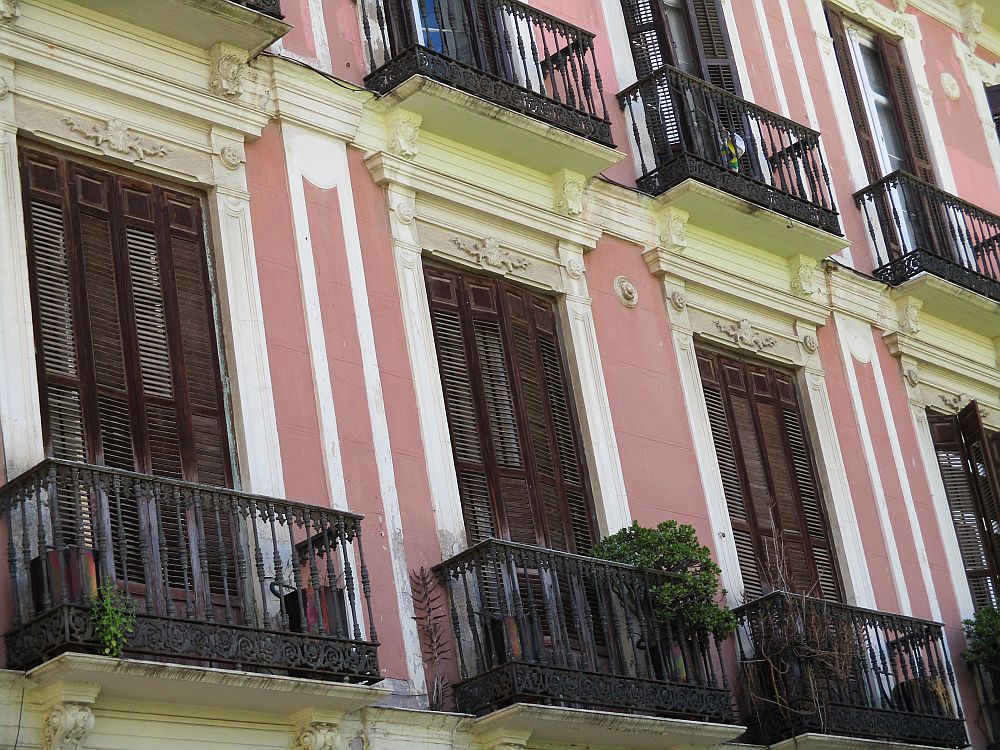
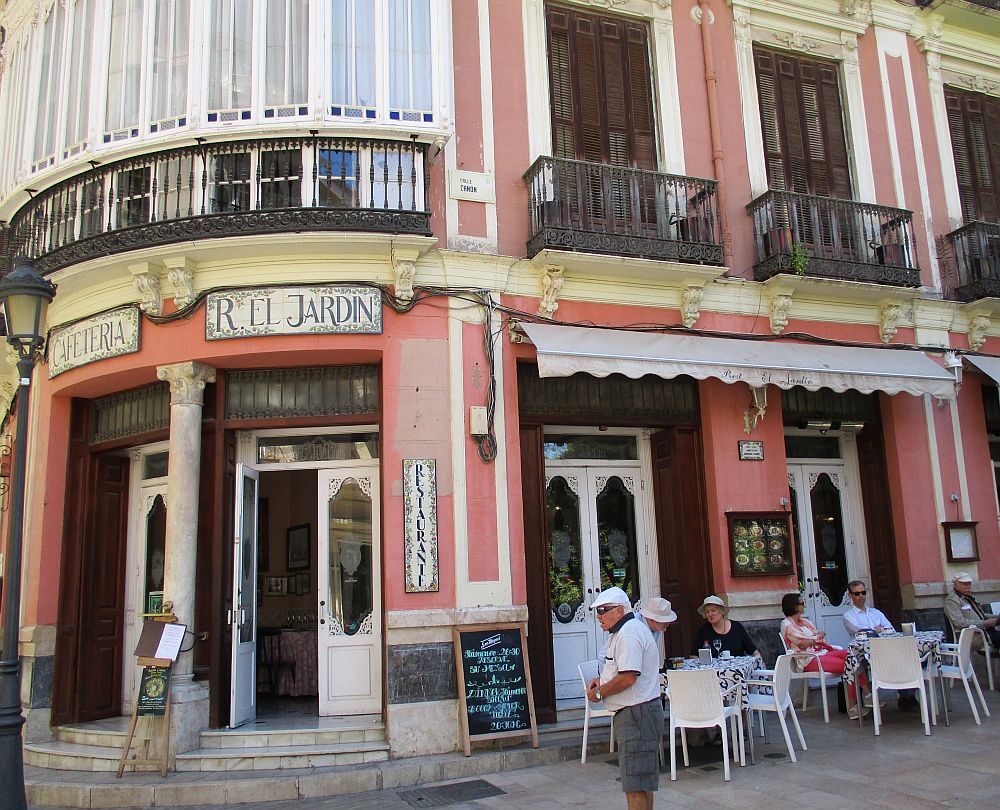
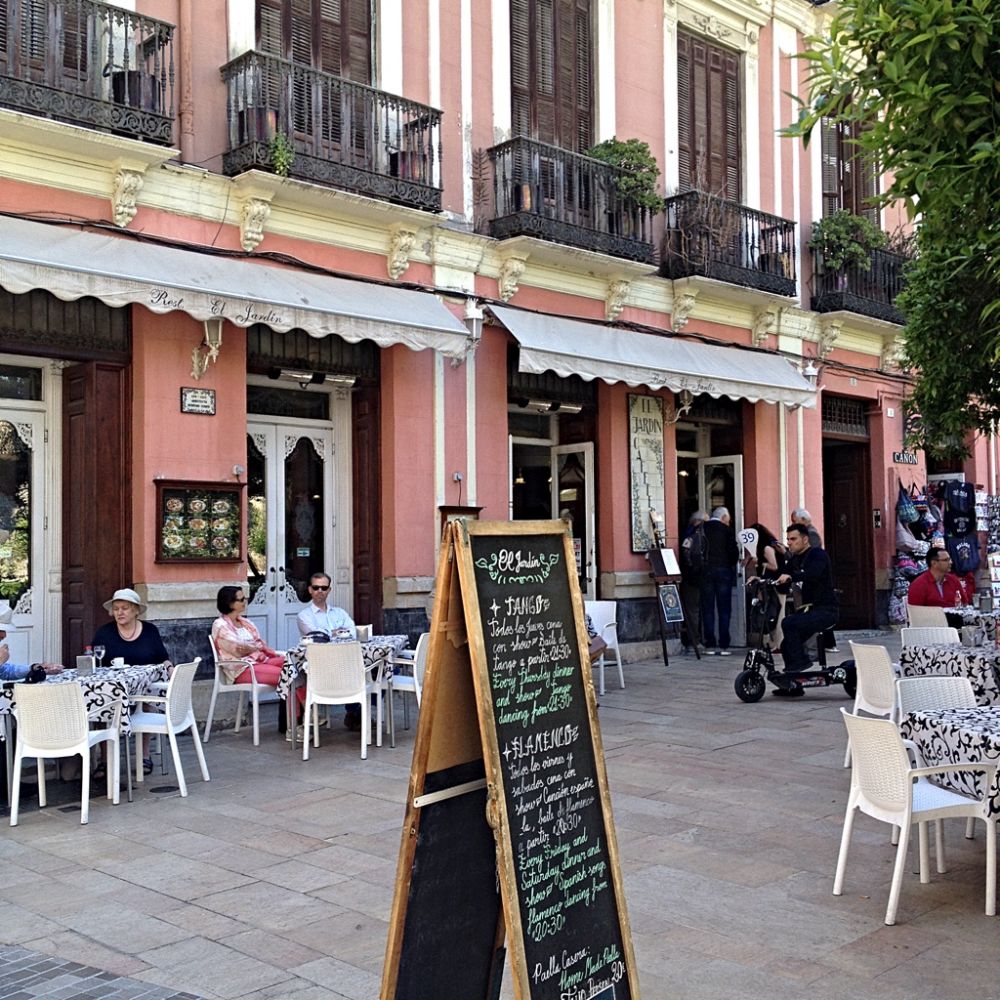
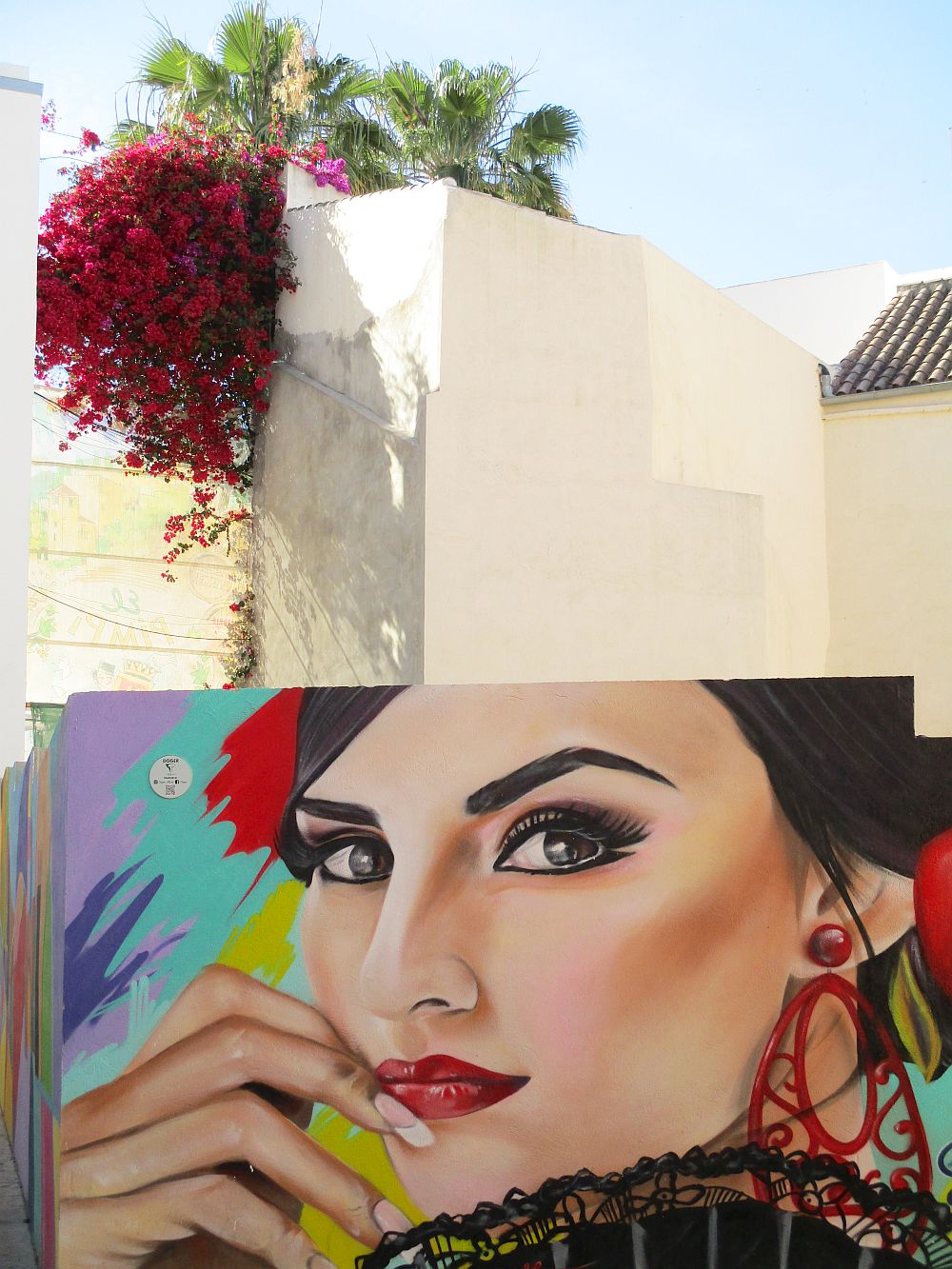
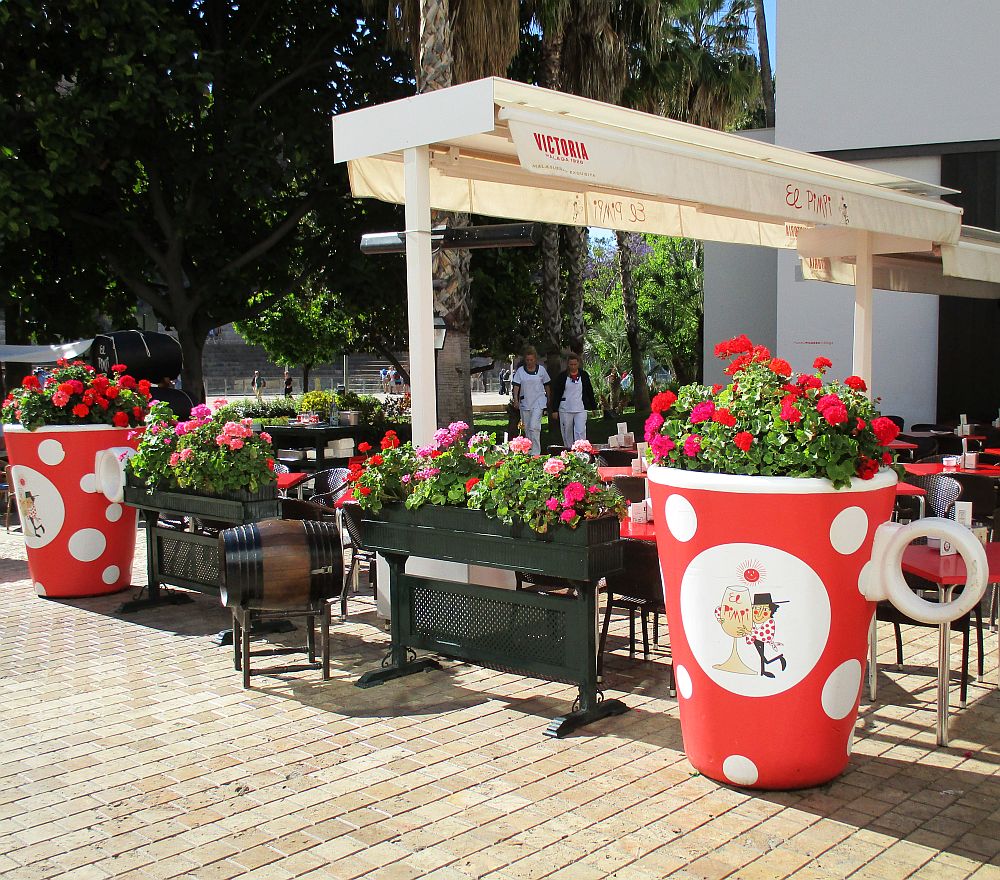
El Pimpi
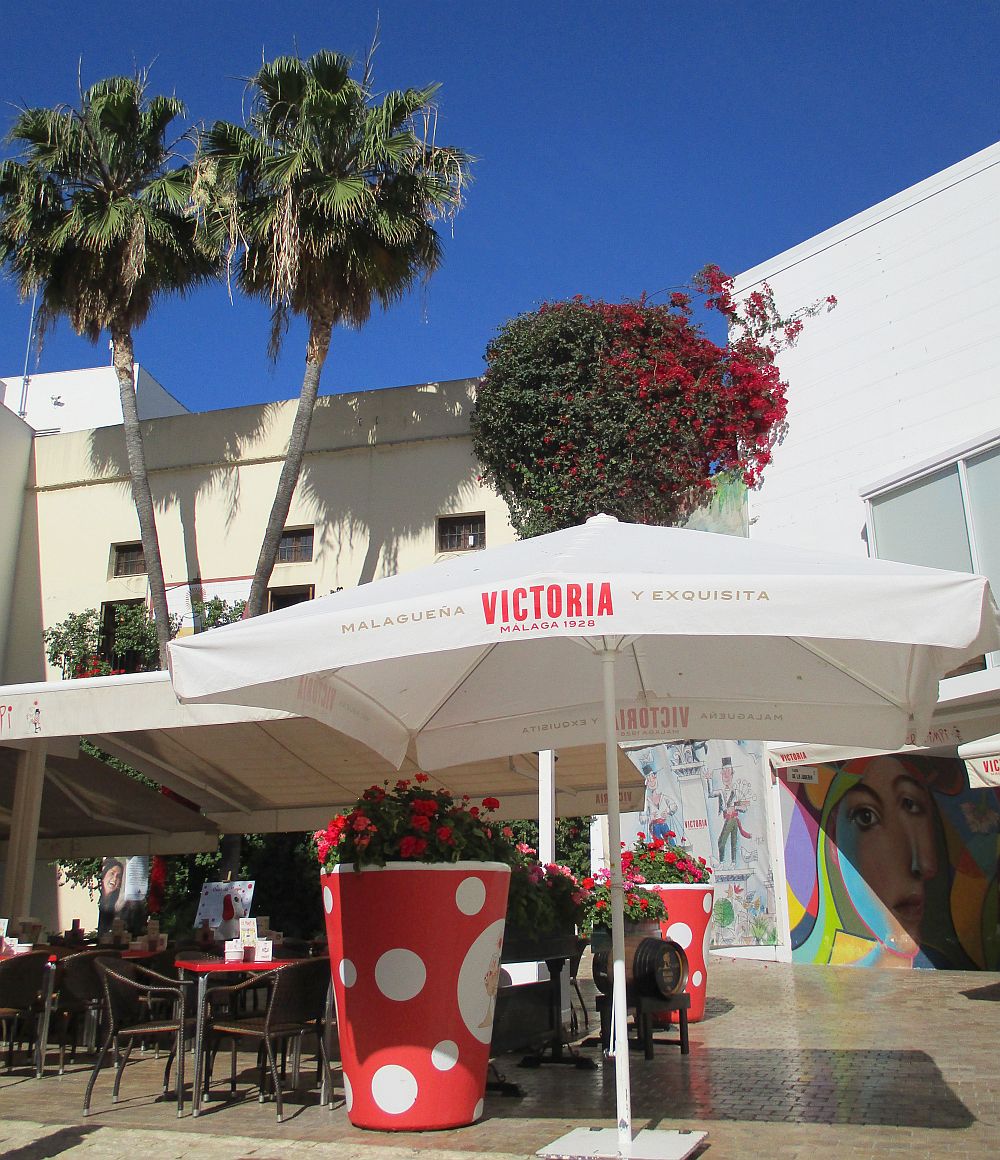
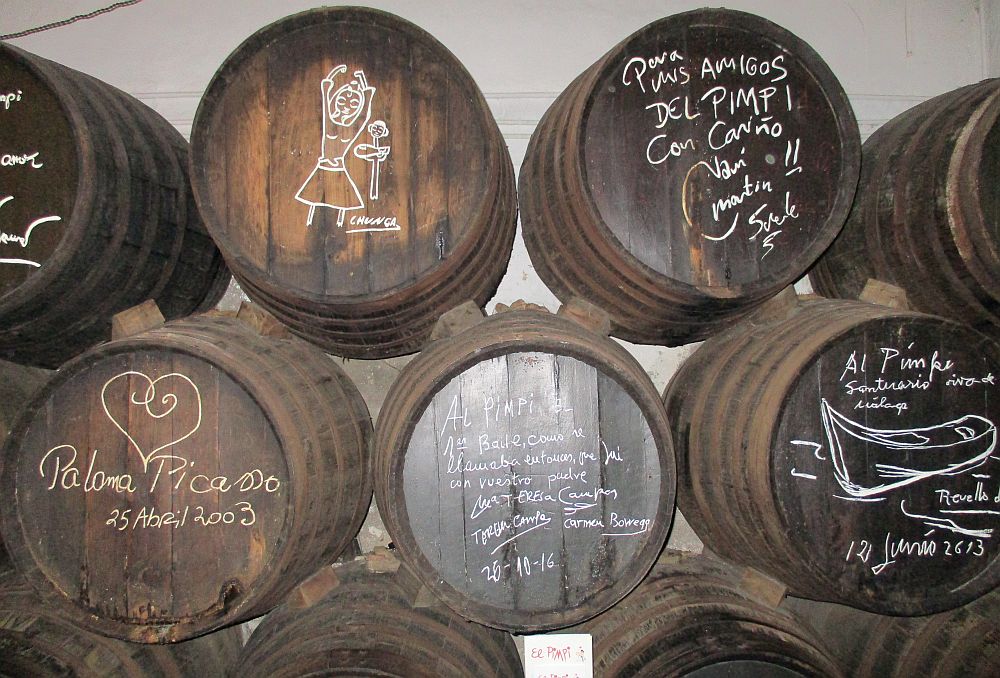
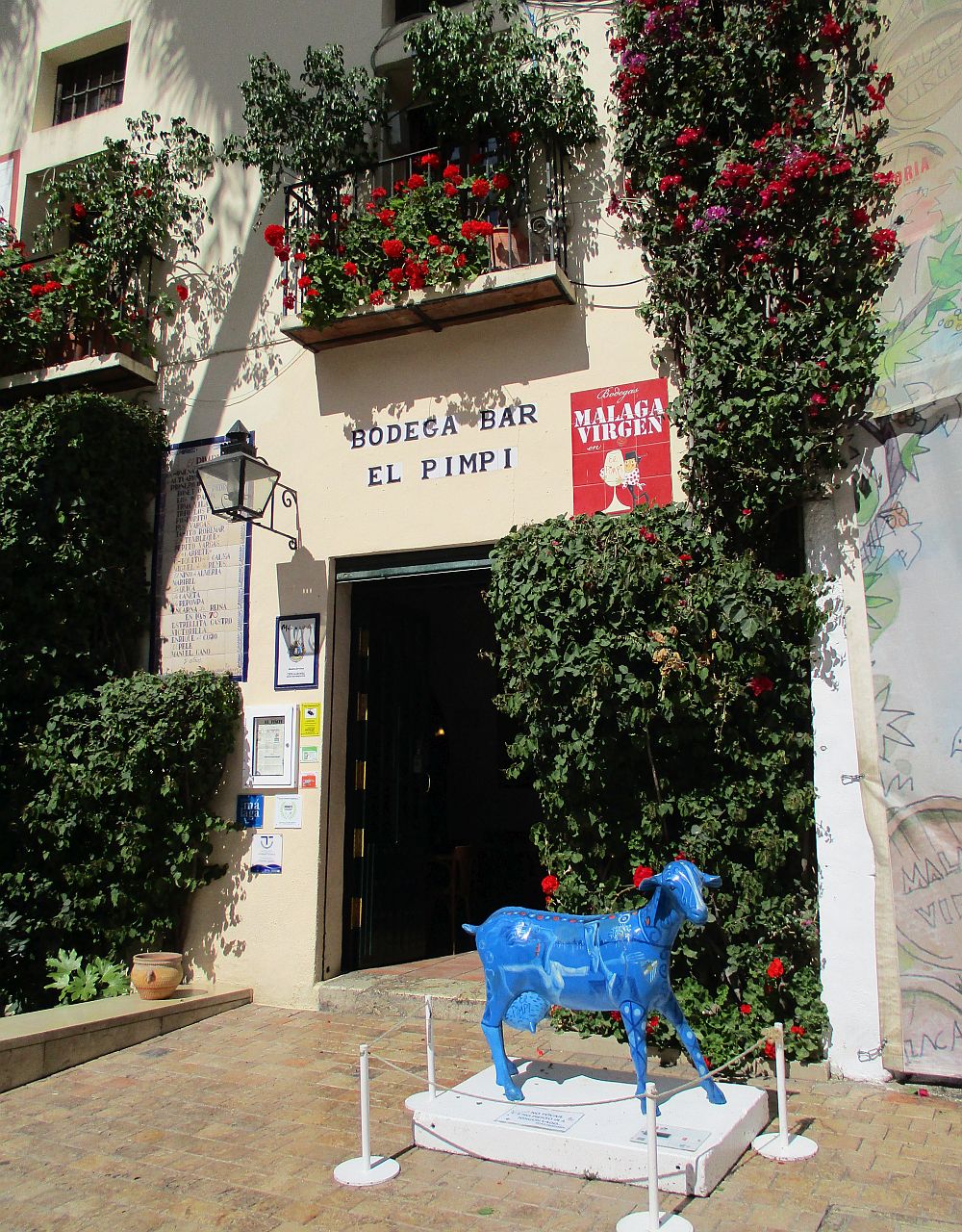
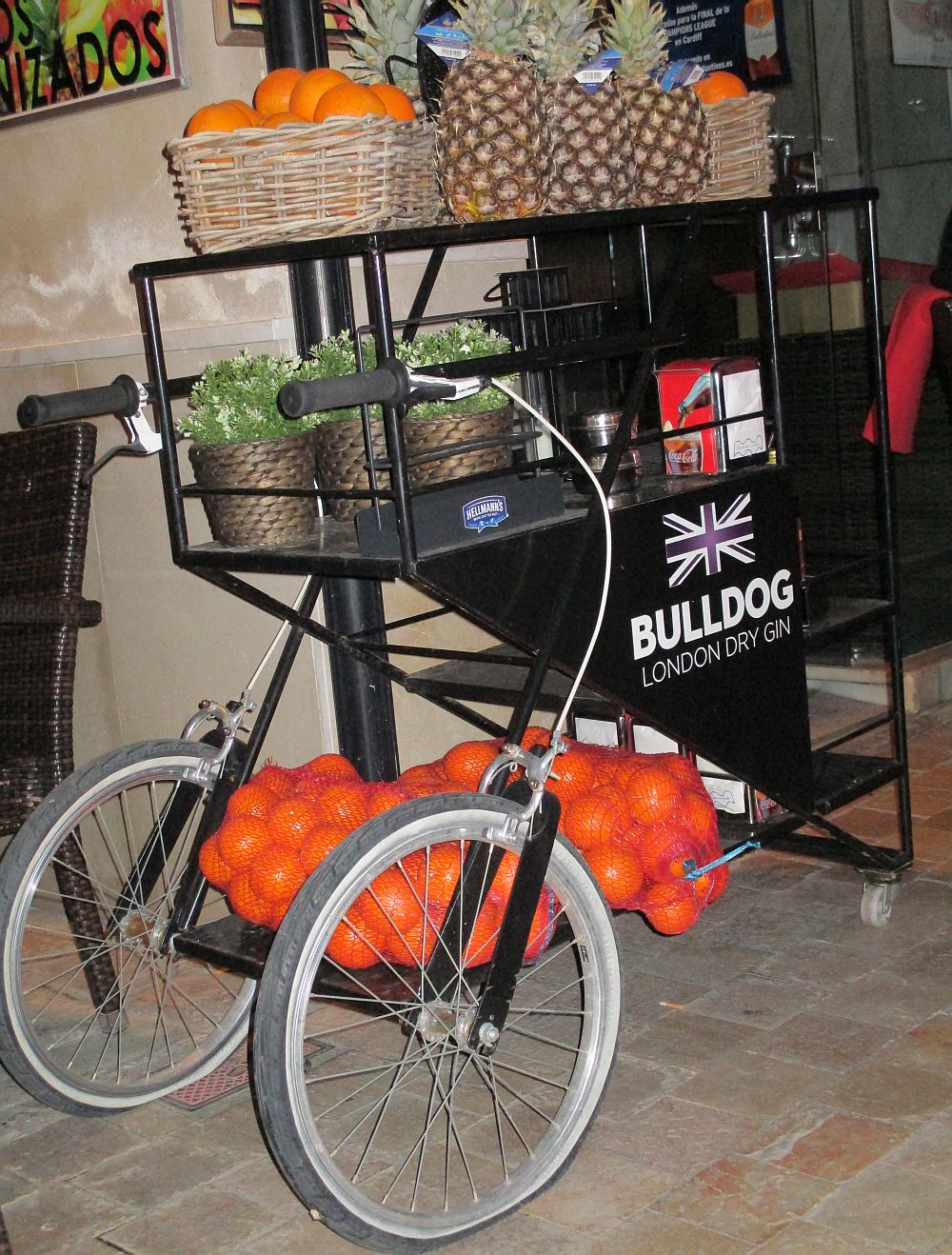
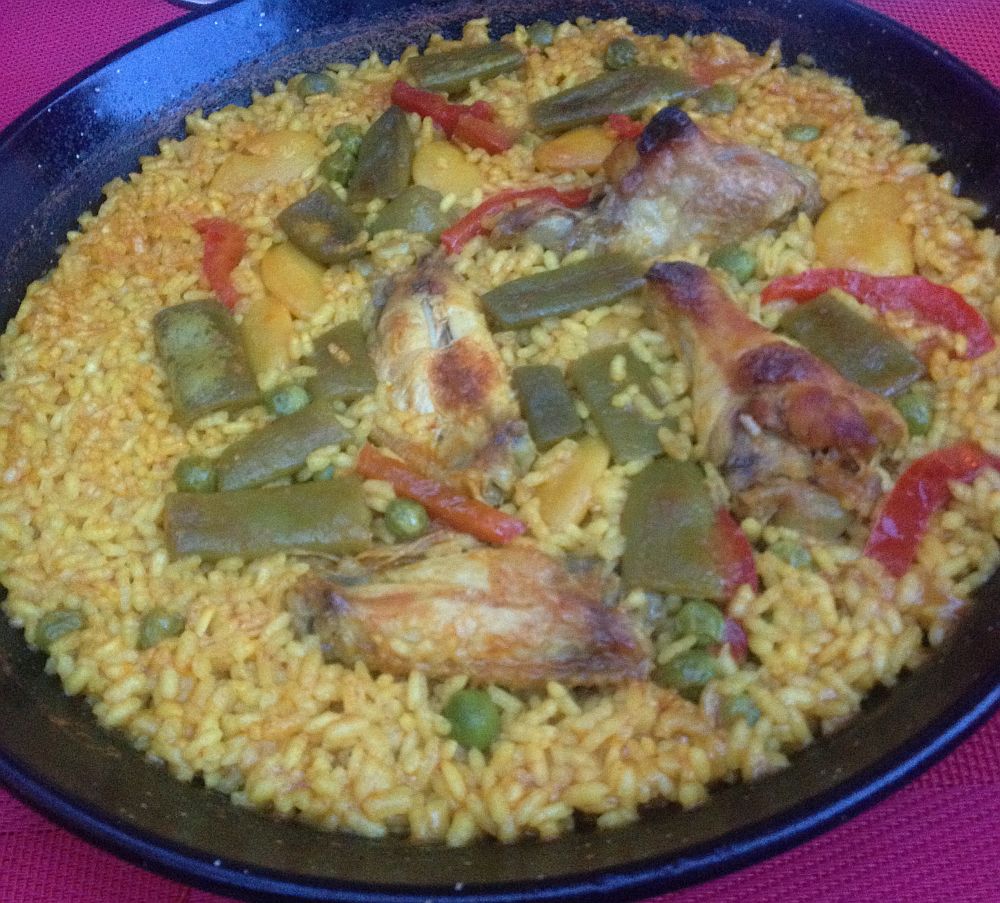
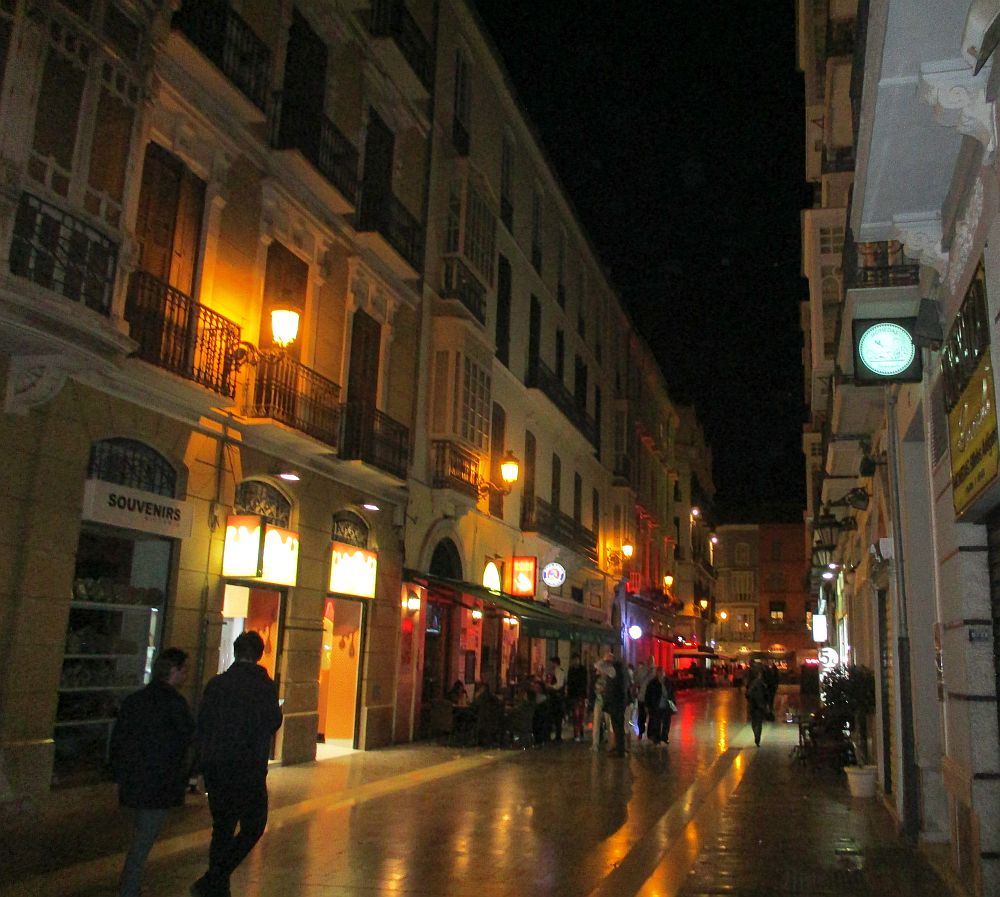
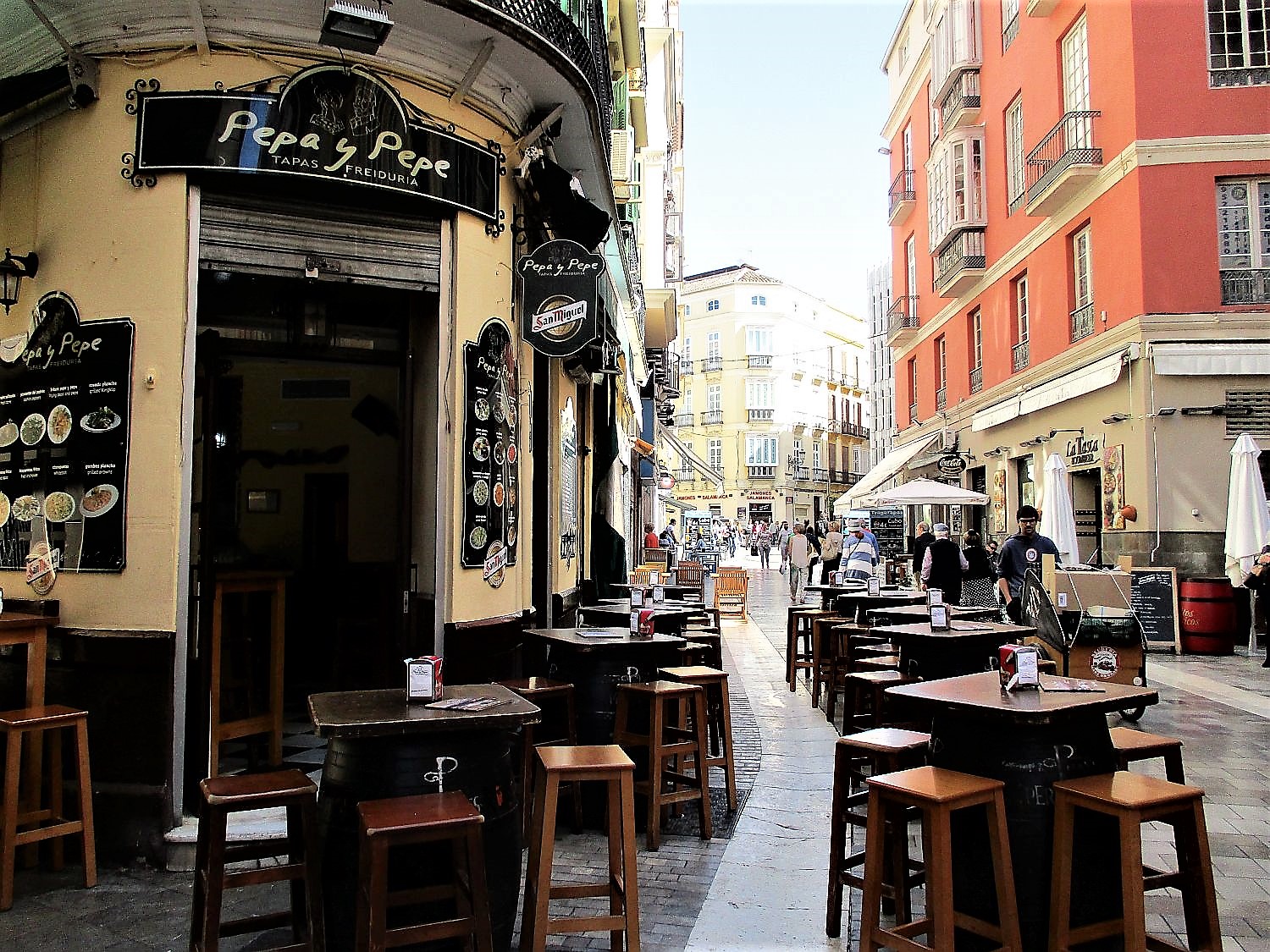
Málaga’s Alcazaba is another beautiful experience. The entrance is next to the Roman amphitheater, from where a meandering path climbs amid lush greenery: crimson bougainvillea, lofty palms, fragrant jasmine bushes and rows of orange trees. Extensively restored, this palace-fortress dates from the 11th century Moorish period; the caliphal horseshoe arches, courtyards and bubbling fountains are evocative of this influential period in Málaga’s history. There are various exhibits of Islamic pottery, but the main joys are the building itself, the gardens and the views.
At the end of the Paseo del Parque lies the exclusive residential district of La Malagueta, situated on a piece of land protruding into the sea. Apartments here have frontline sea views, and some of Málaga’s best restaurants are found here, near the Playa de la Malagueta, the closest beach to the city center.
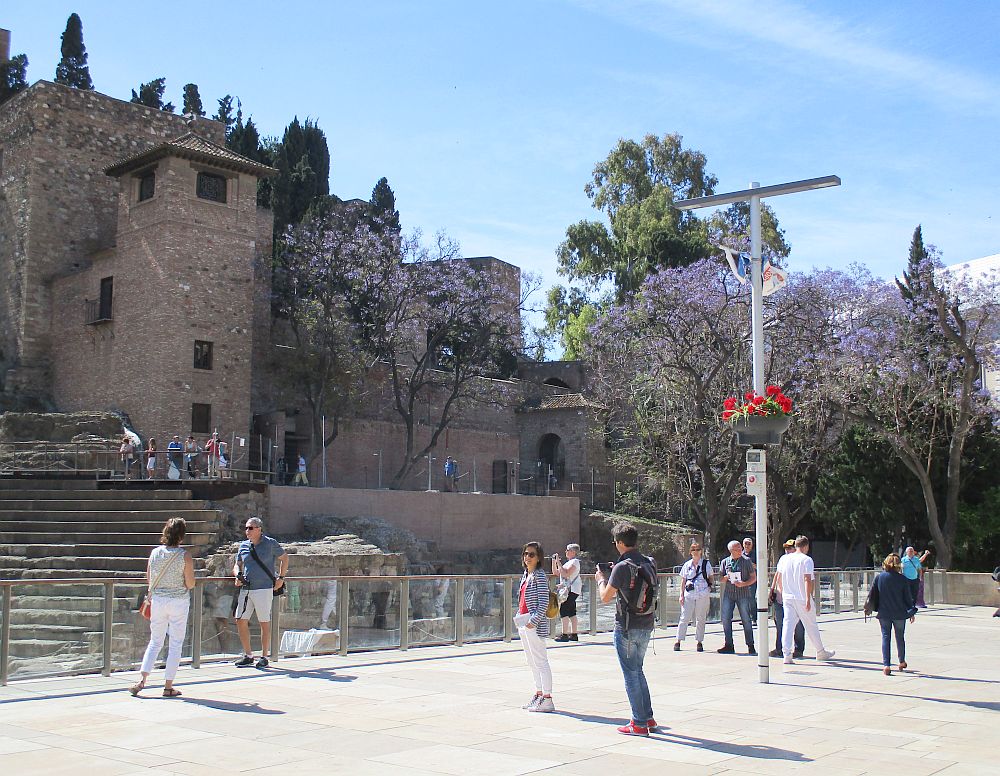
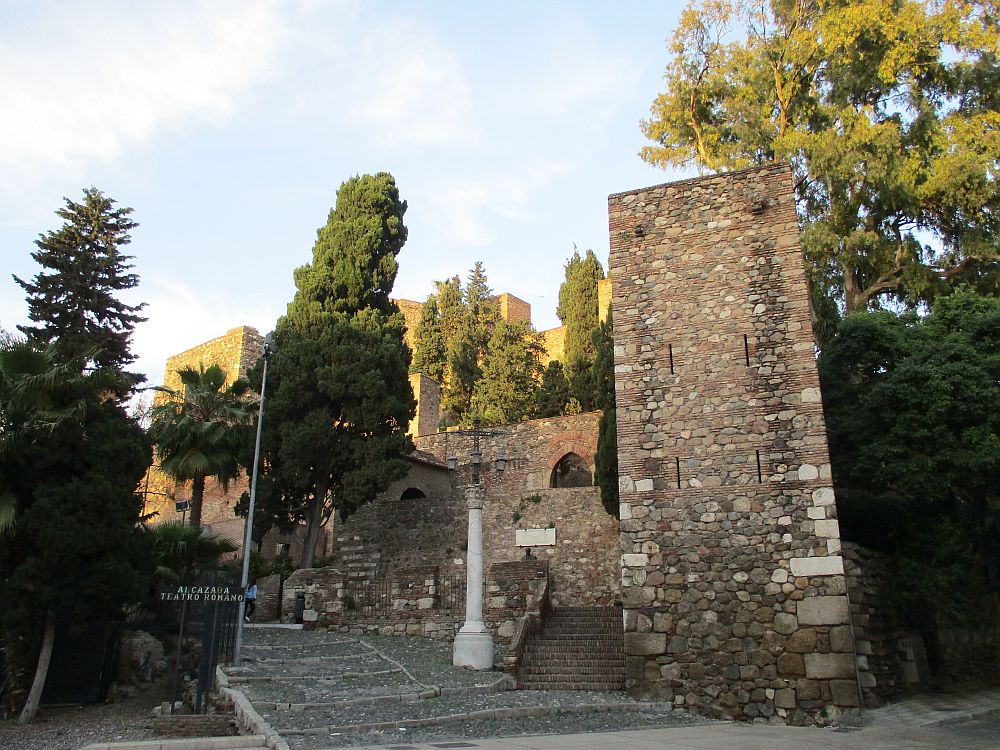
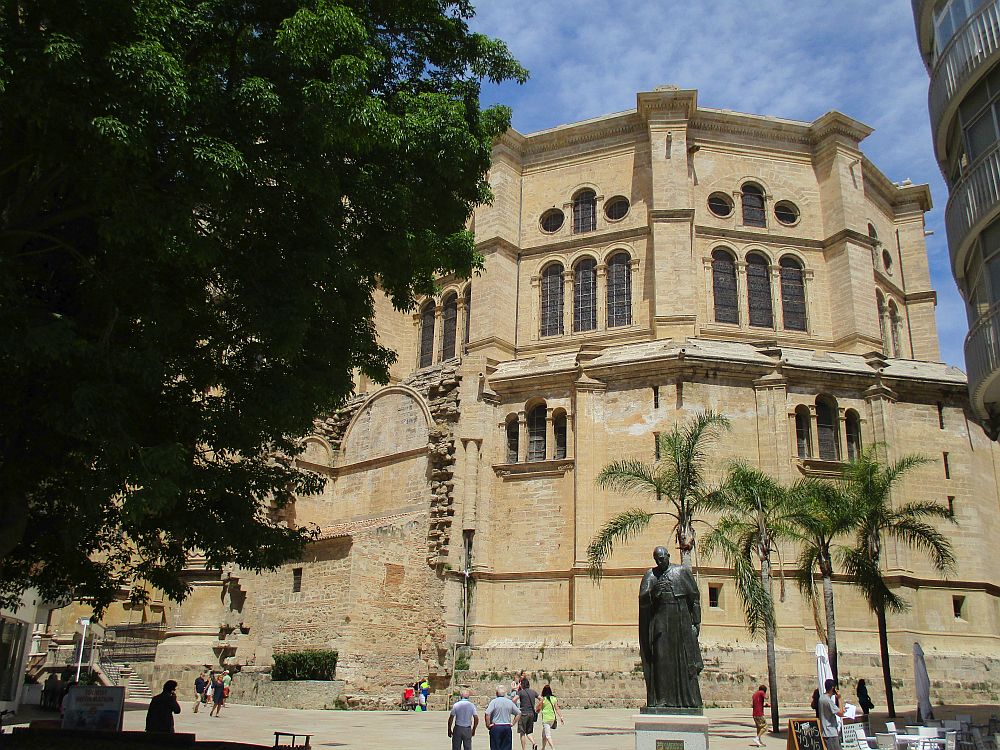
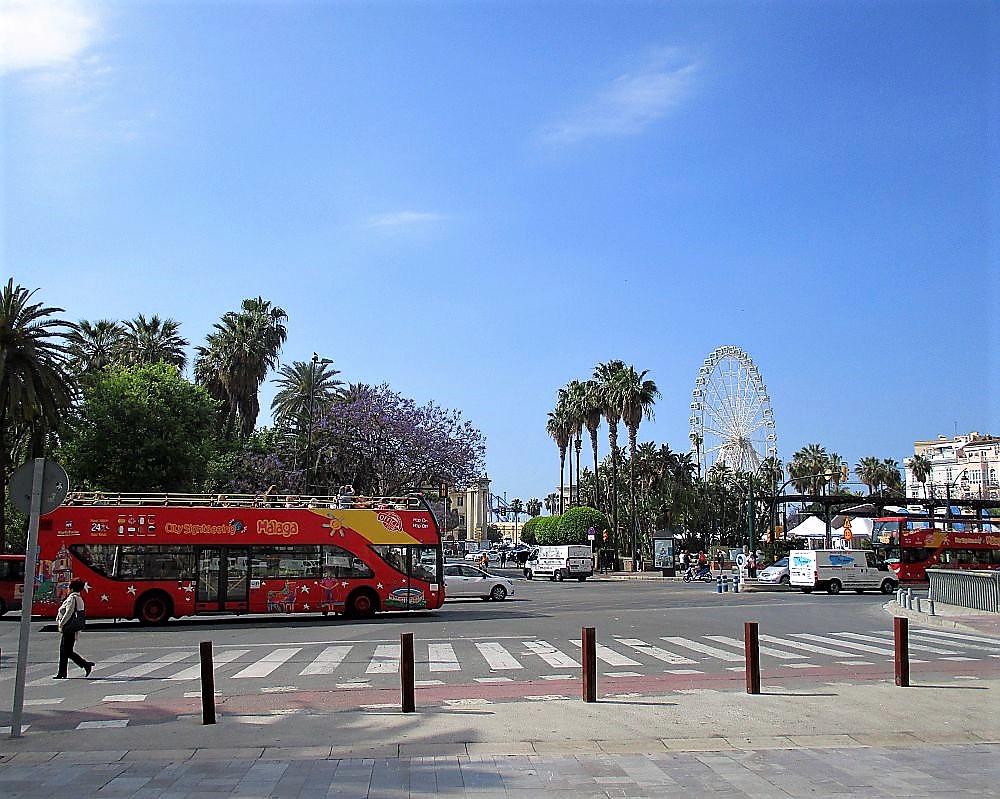

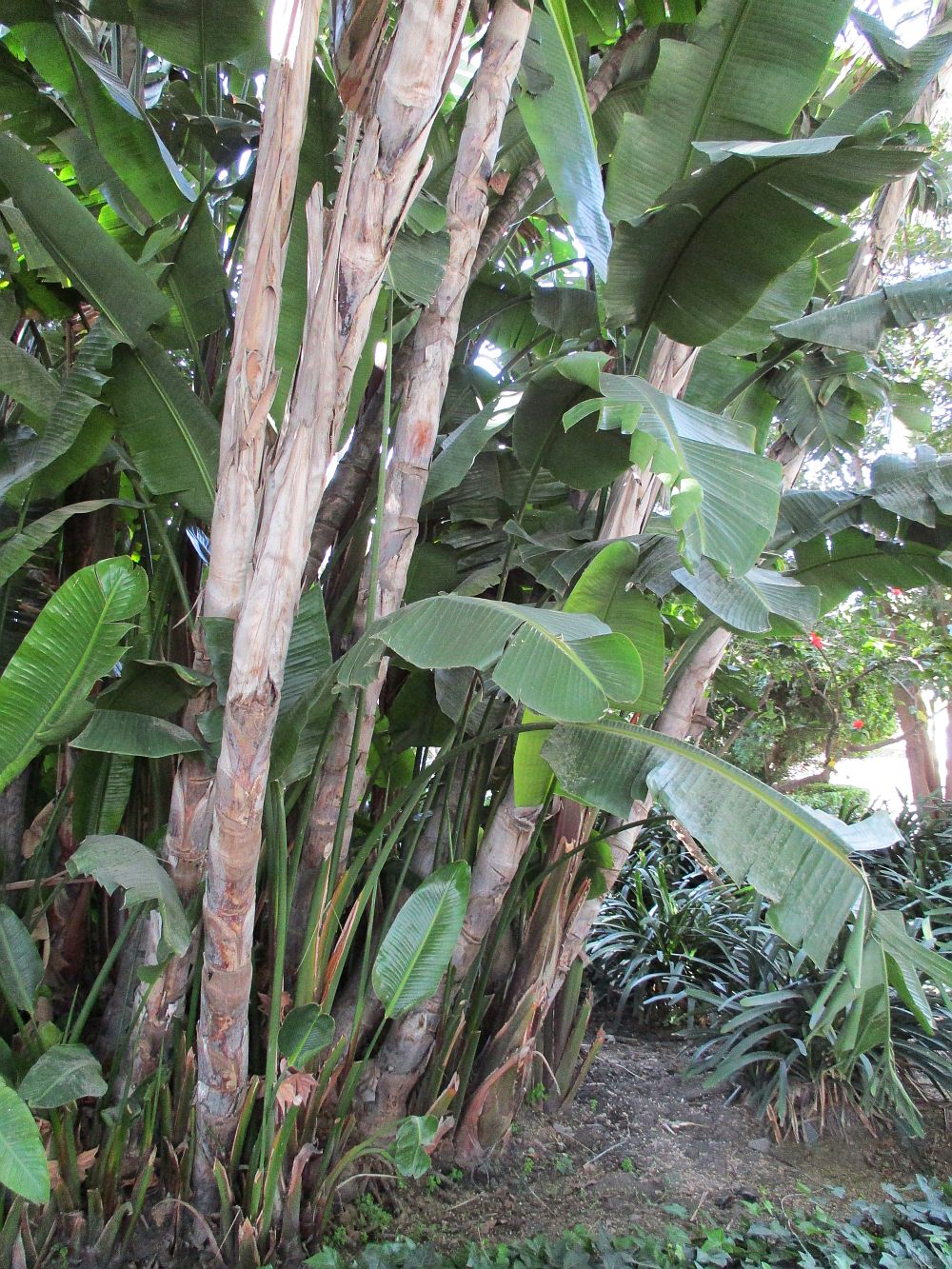
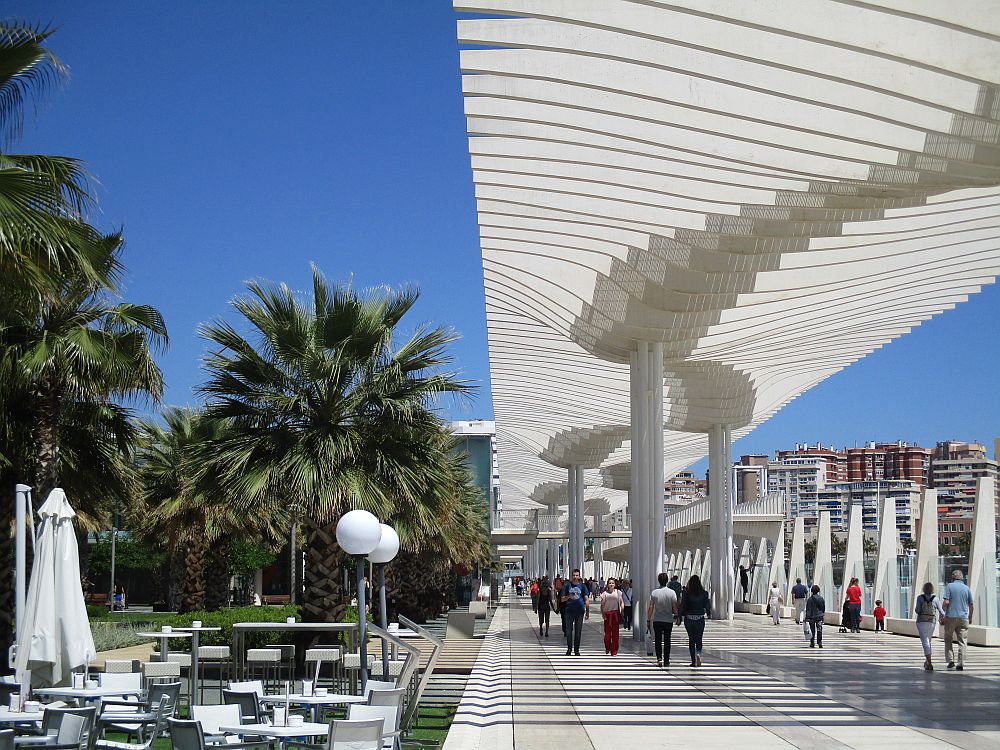

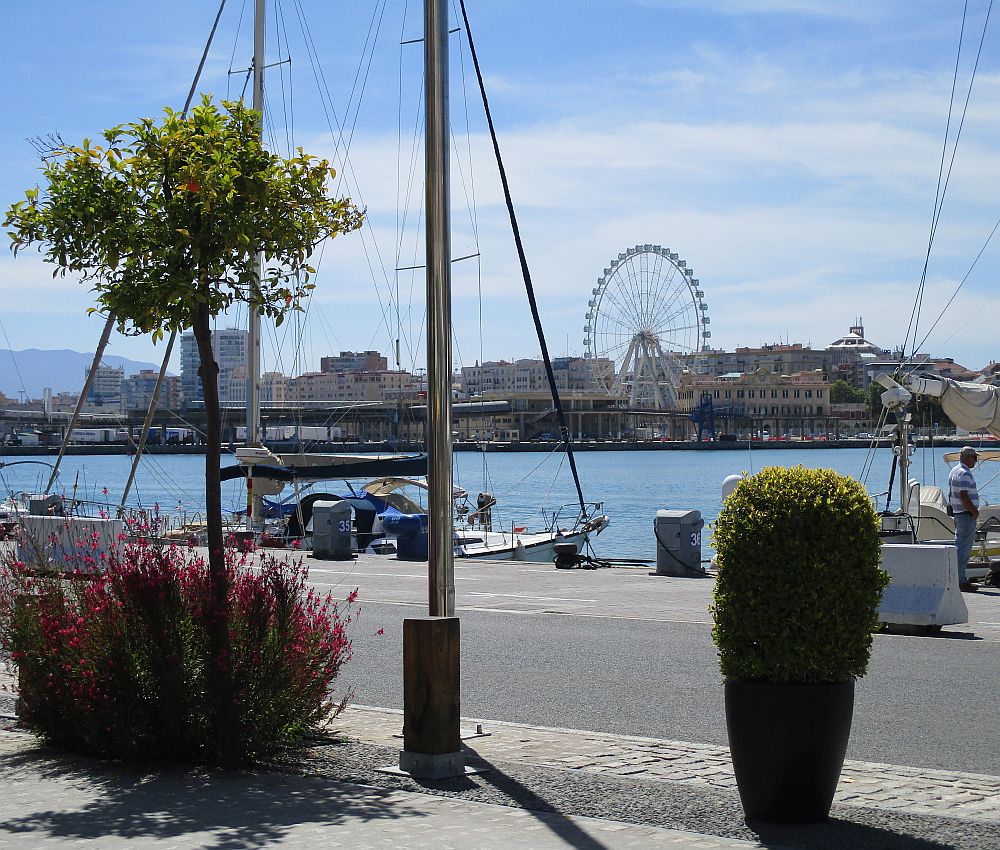
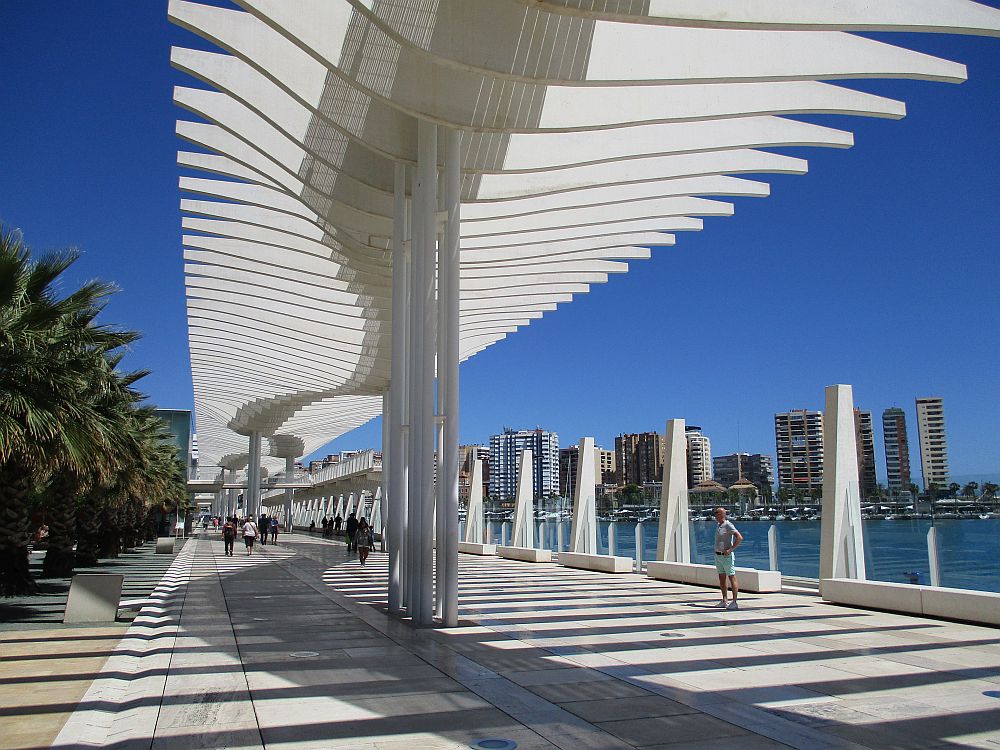
Palmeral de las Sorpresas
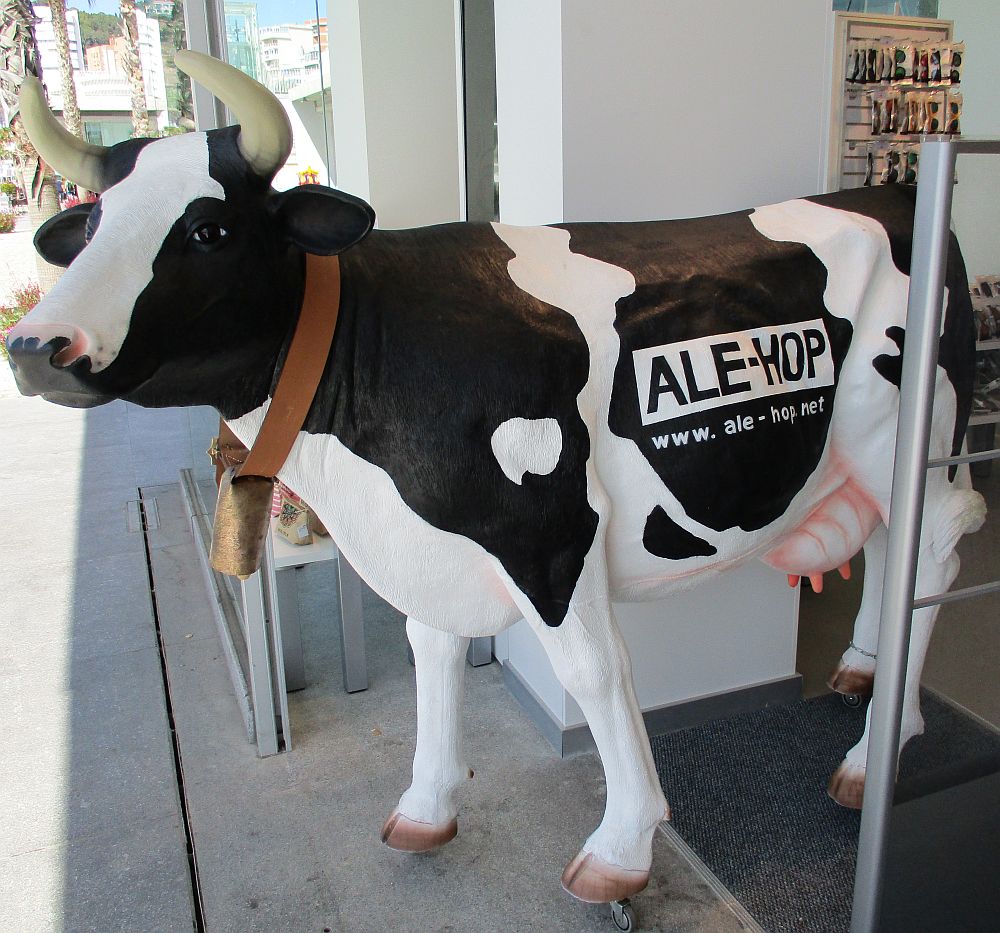
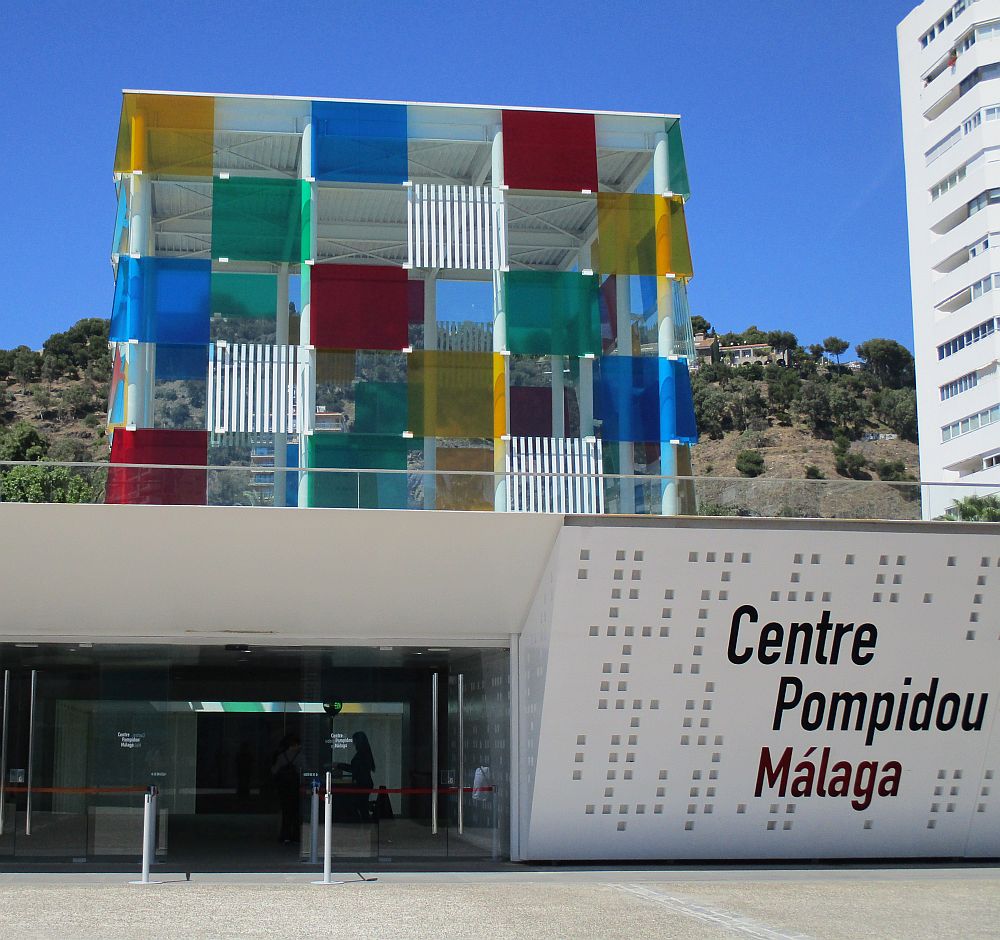

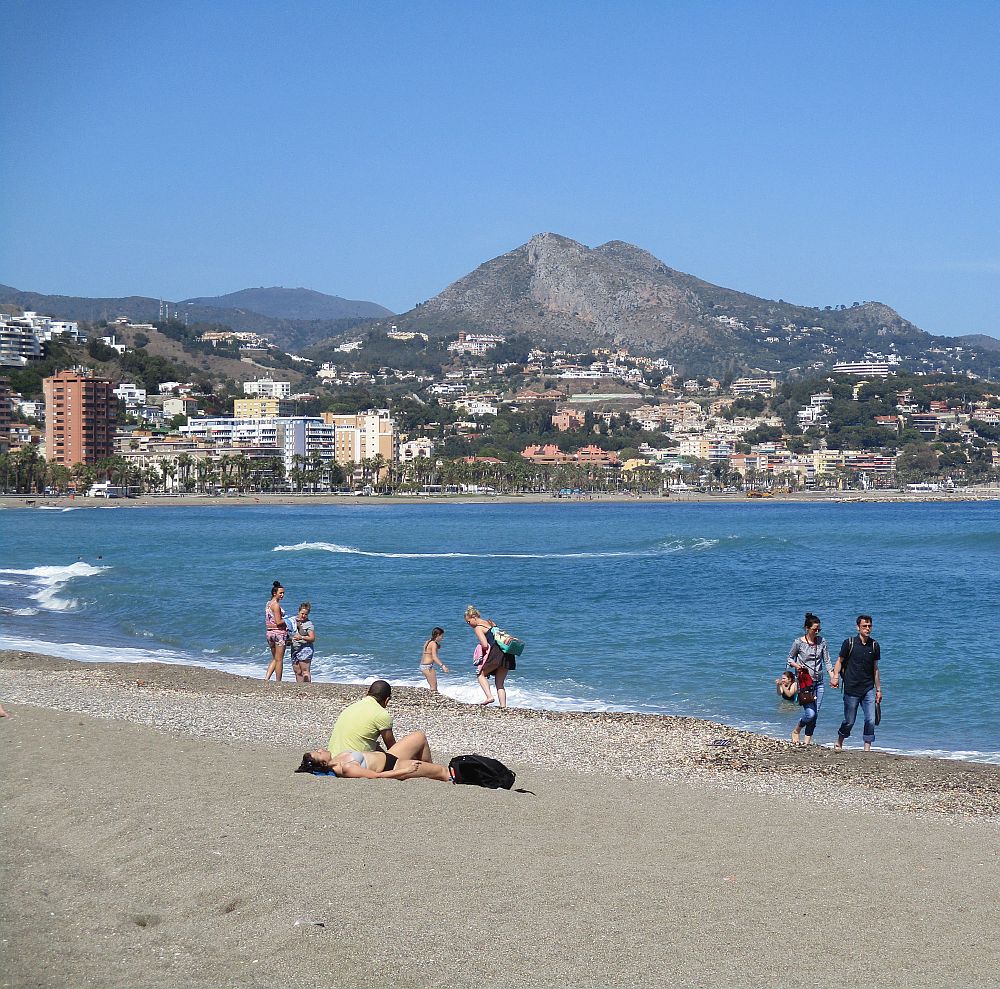
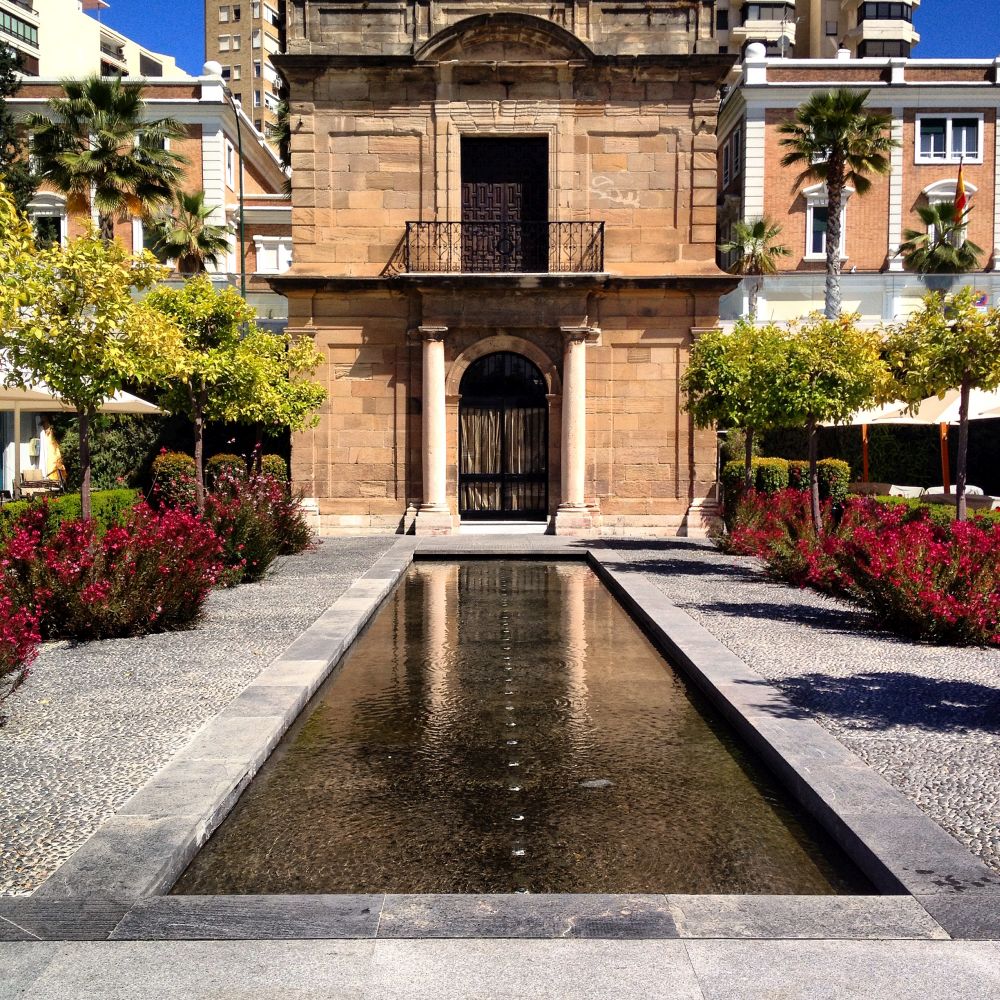
Capilla del Puerto de Malaga. This pretty little church stands out like a sore thumb, in a fantastic way, nestled in between the modern glamour of Malaga Port.
The magnificent Castillo de Gibralfaro sits on a high hill overlooking Malaga city and port, and dates back to the 10th century, being today one of the most visited monuments in Málaga. From its walls, visitors get spectacular views of the city and also can visit it, to discover the site’s history.

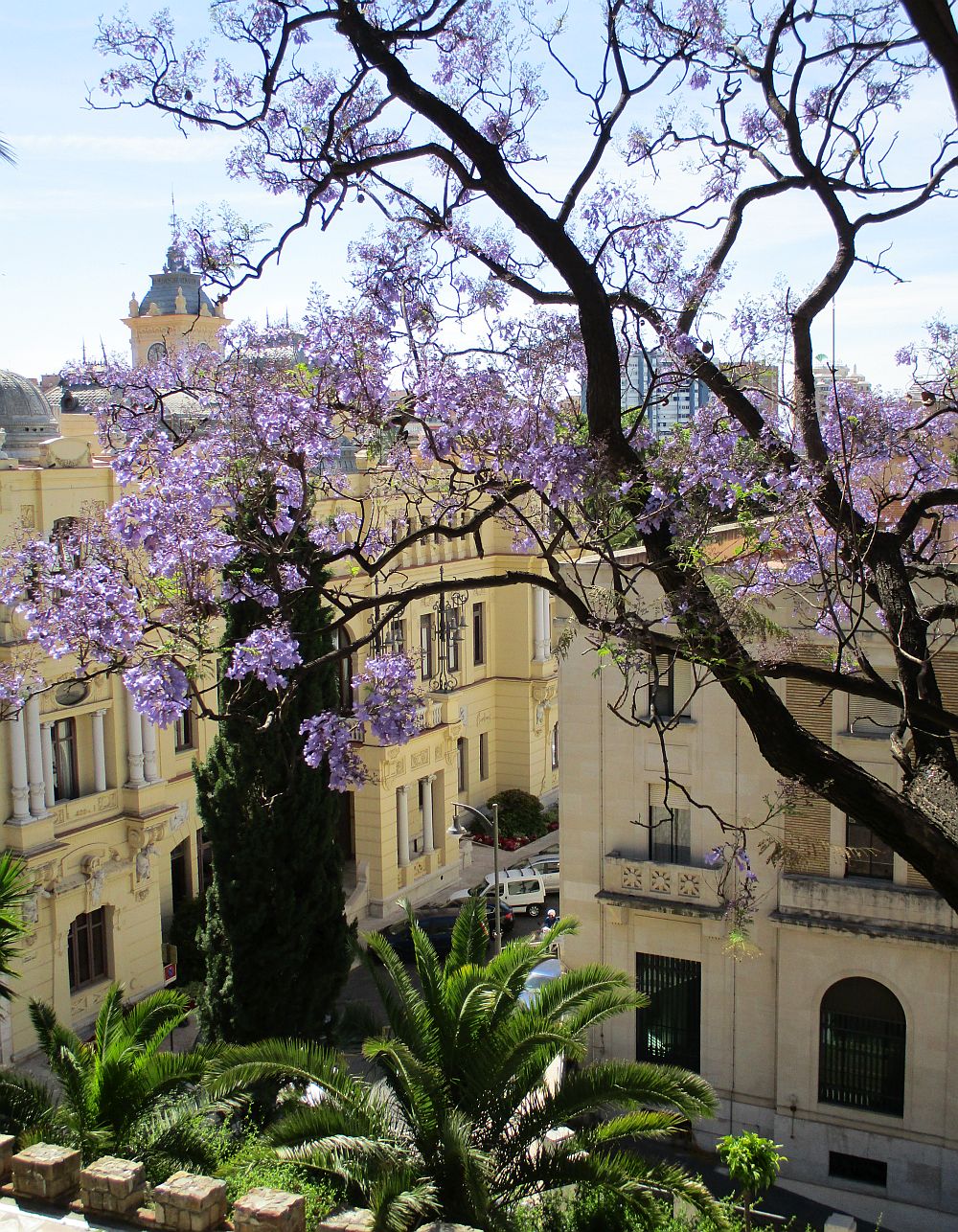
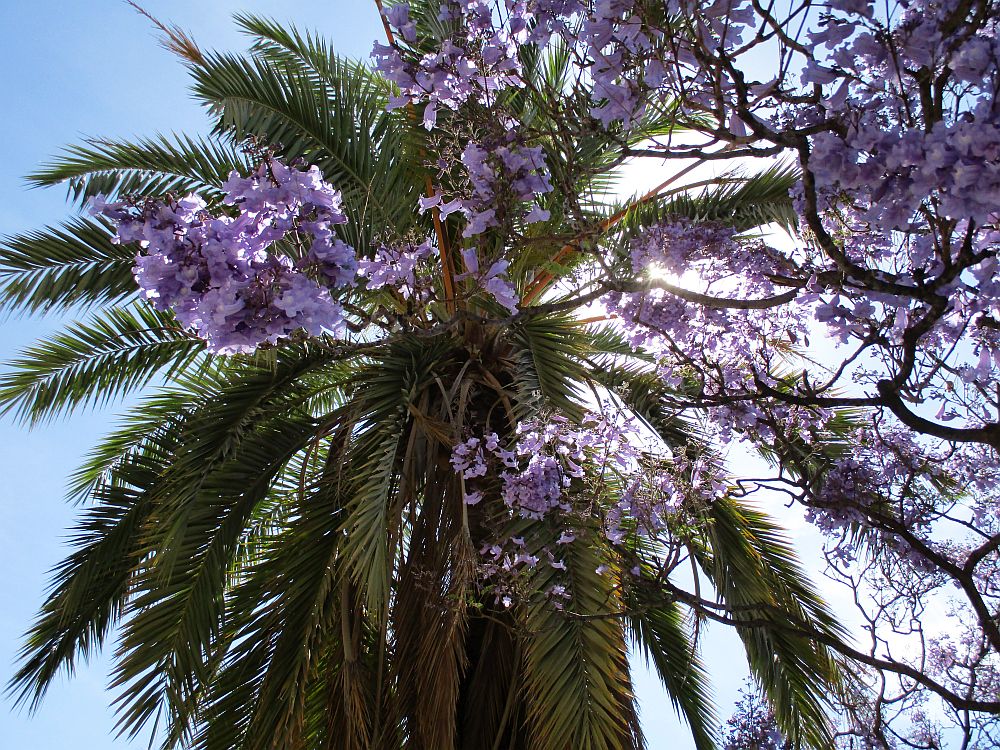
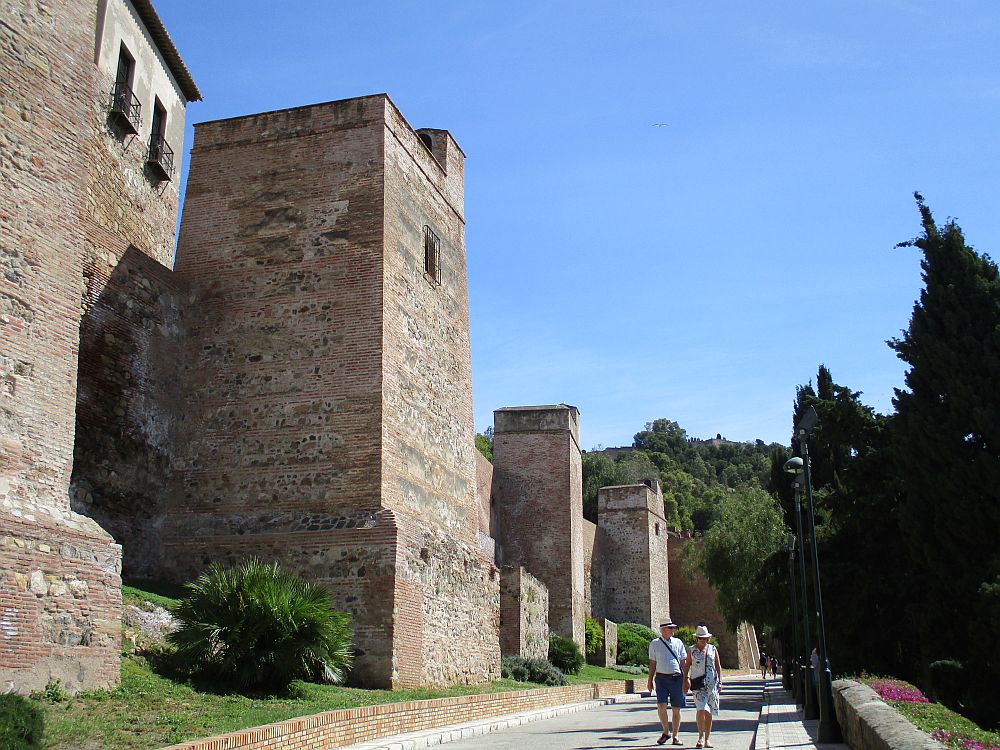
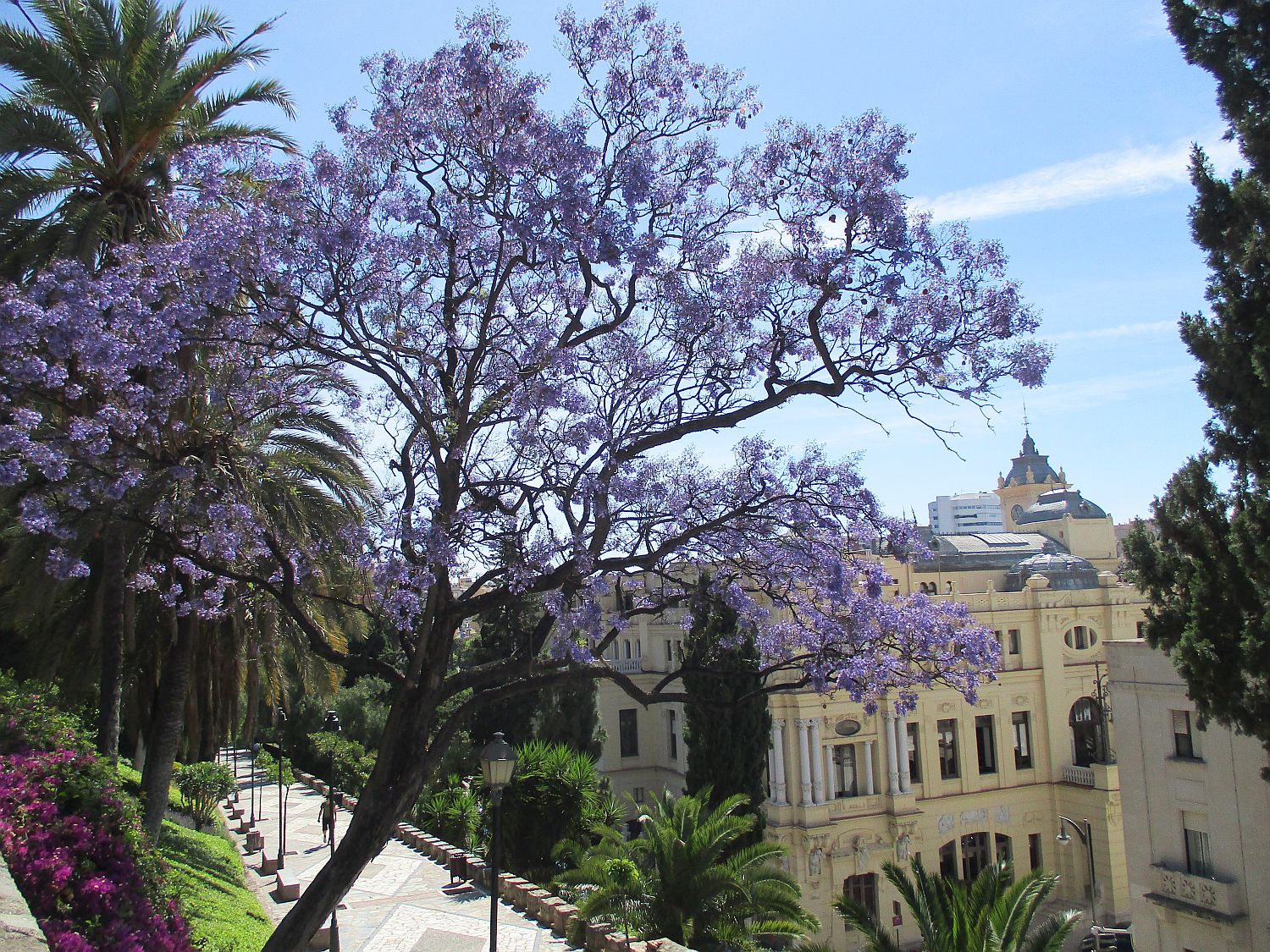
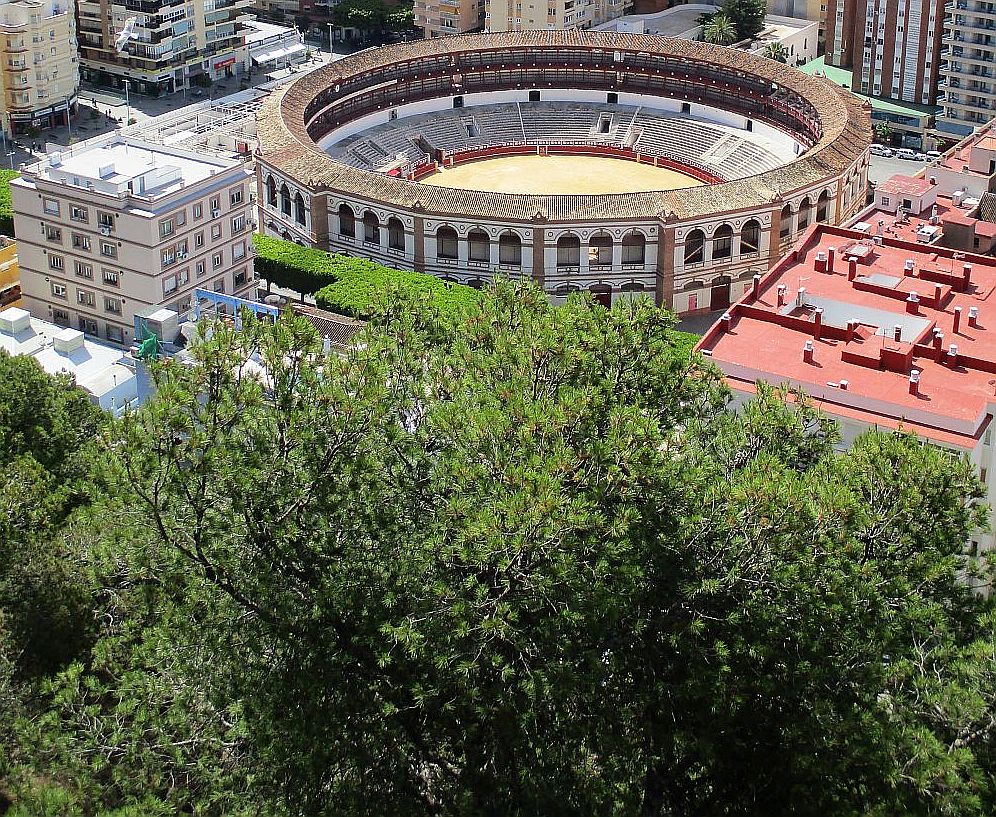
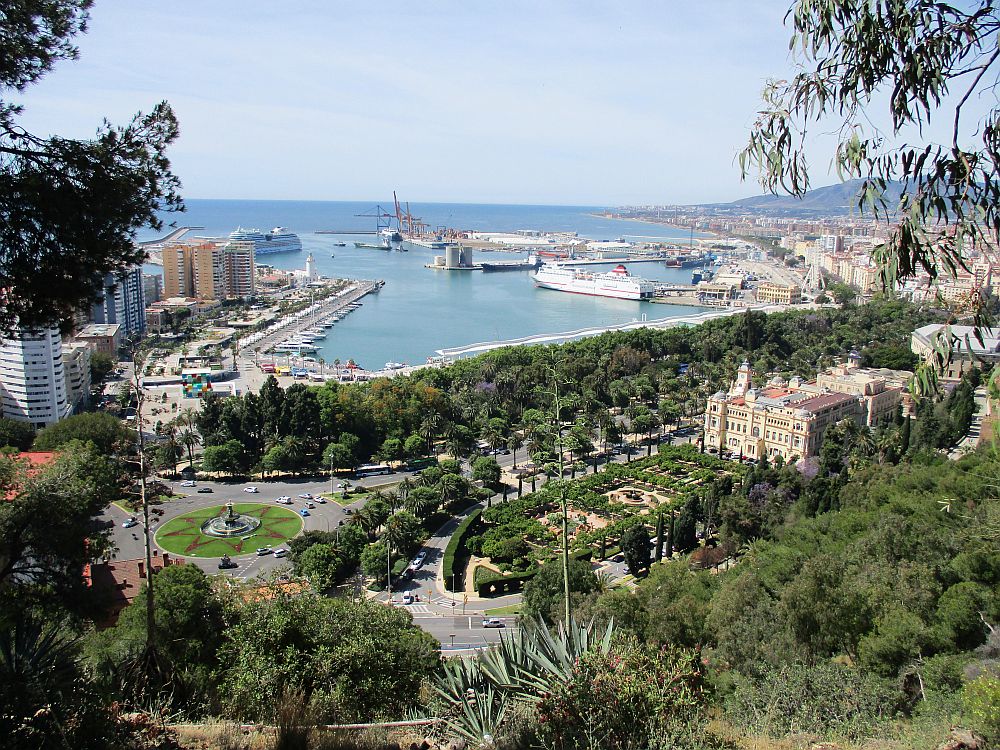
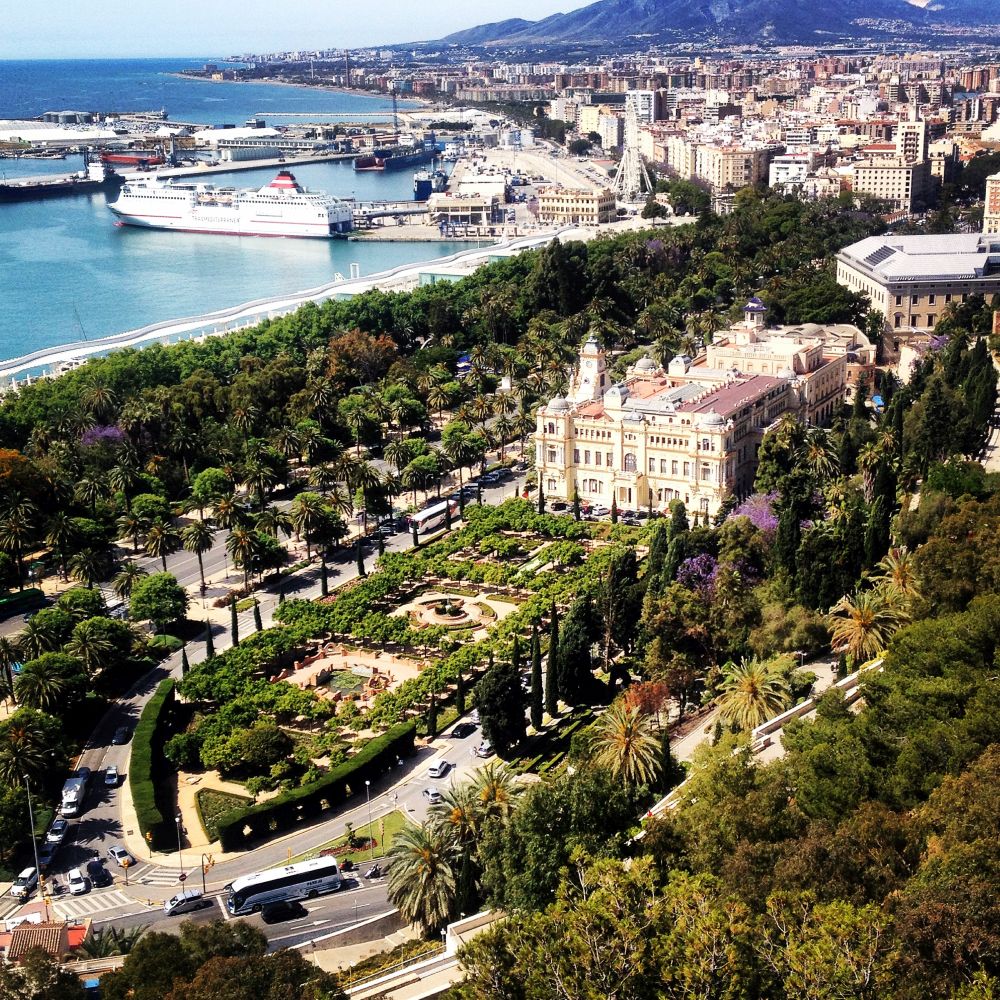
Loaded with history and brimming with a youthful vigor that proudly acknowledges its multi-layered past, the city that gave the world Picasso has transformed itself in spectacular fashion, with half a dozen new art galleries, a radically rethought port area and lots of green spaces, gardens and attractive urban spots.
A place to enjoy and to come back, from time to time, even if only for churros e chocolate and a memorable cultural immersion via Teatro Cervantes.
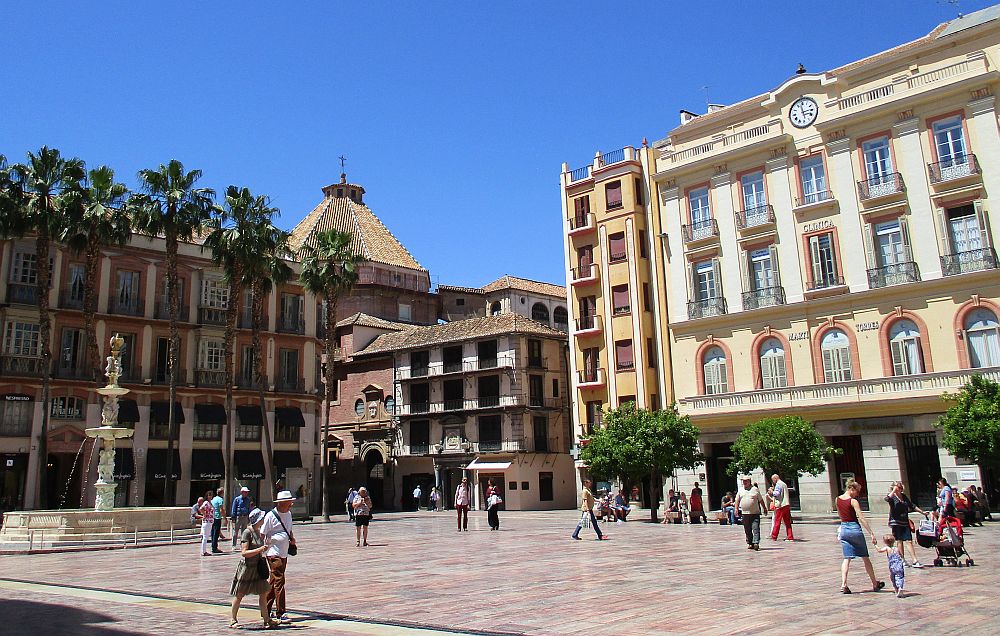
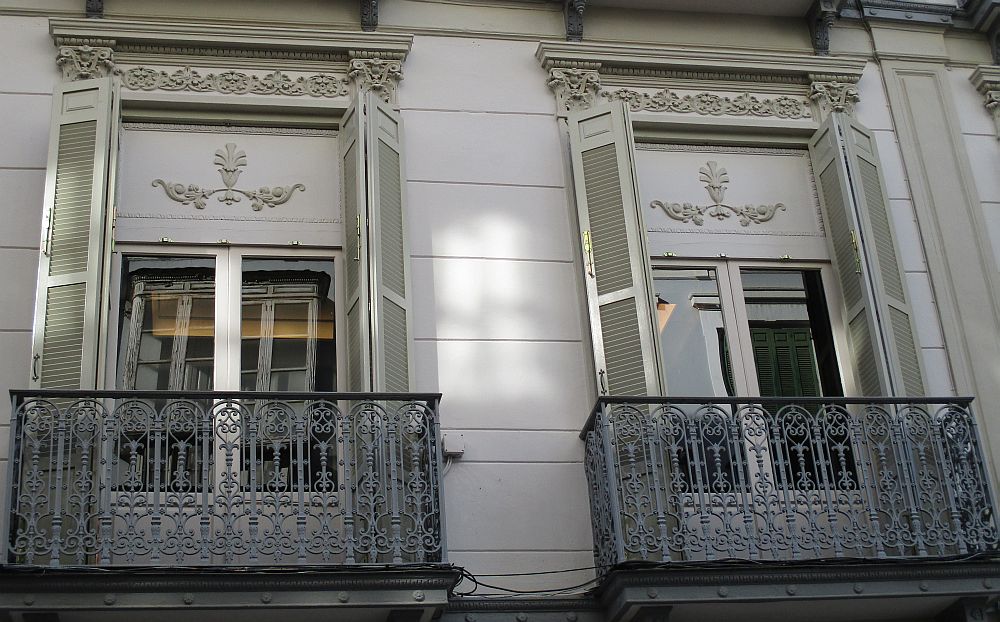
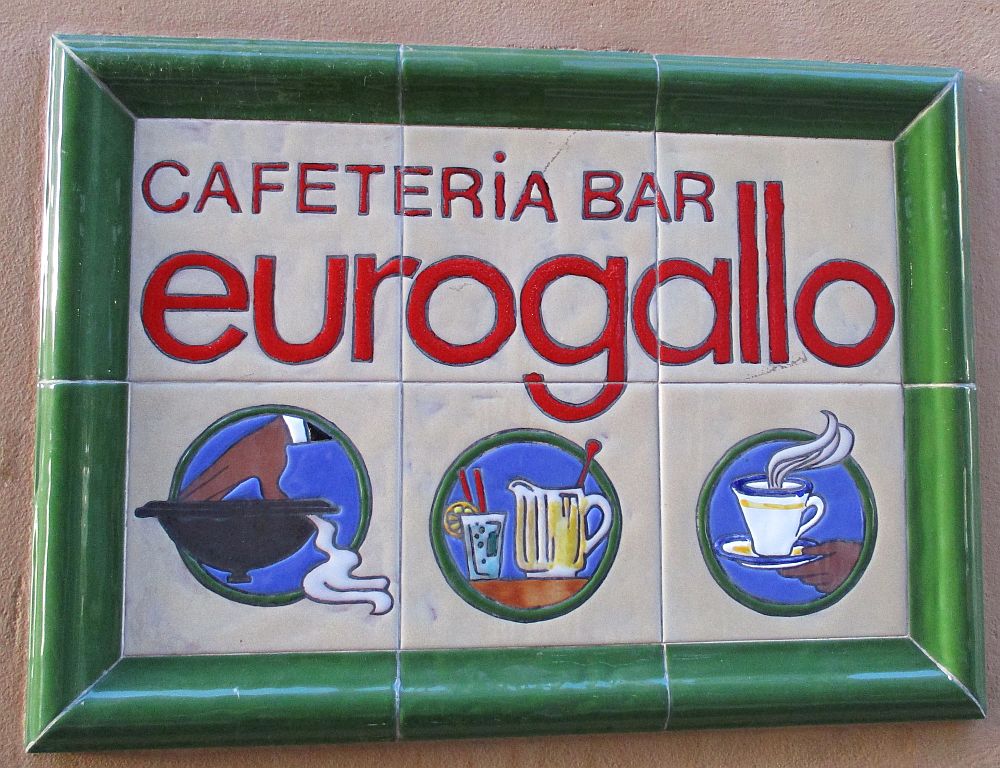
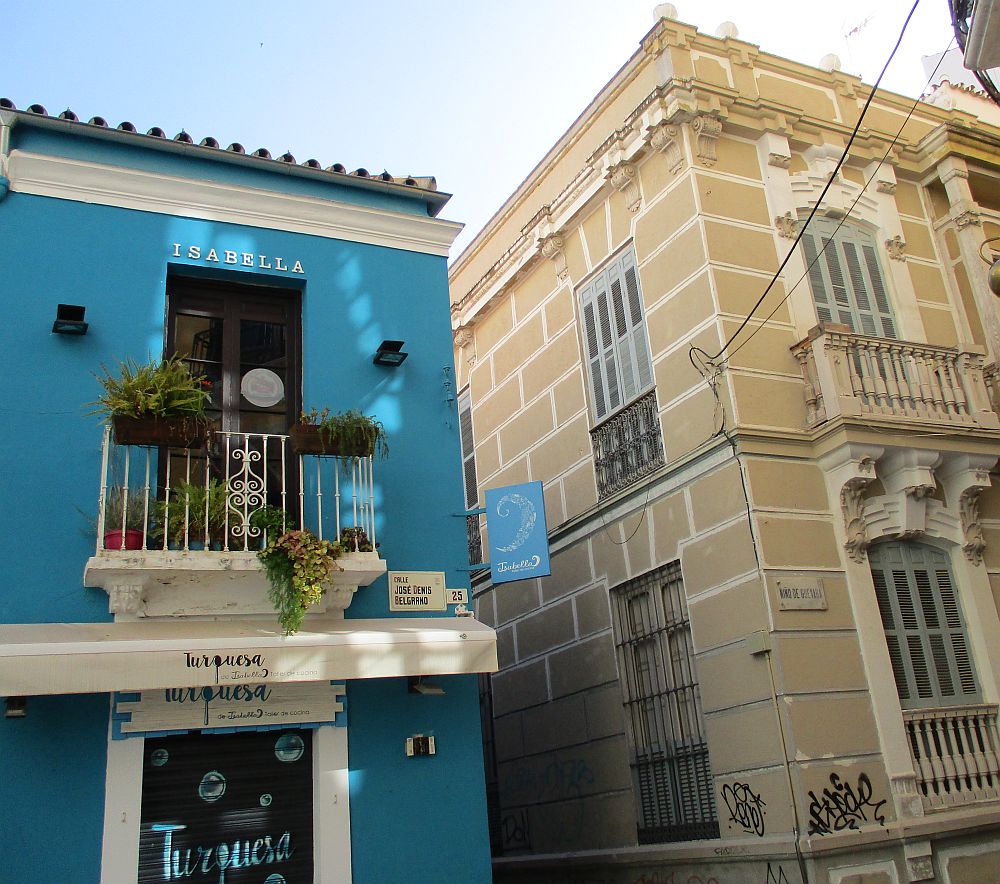

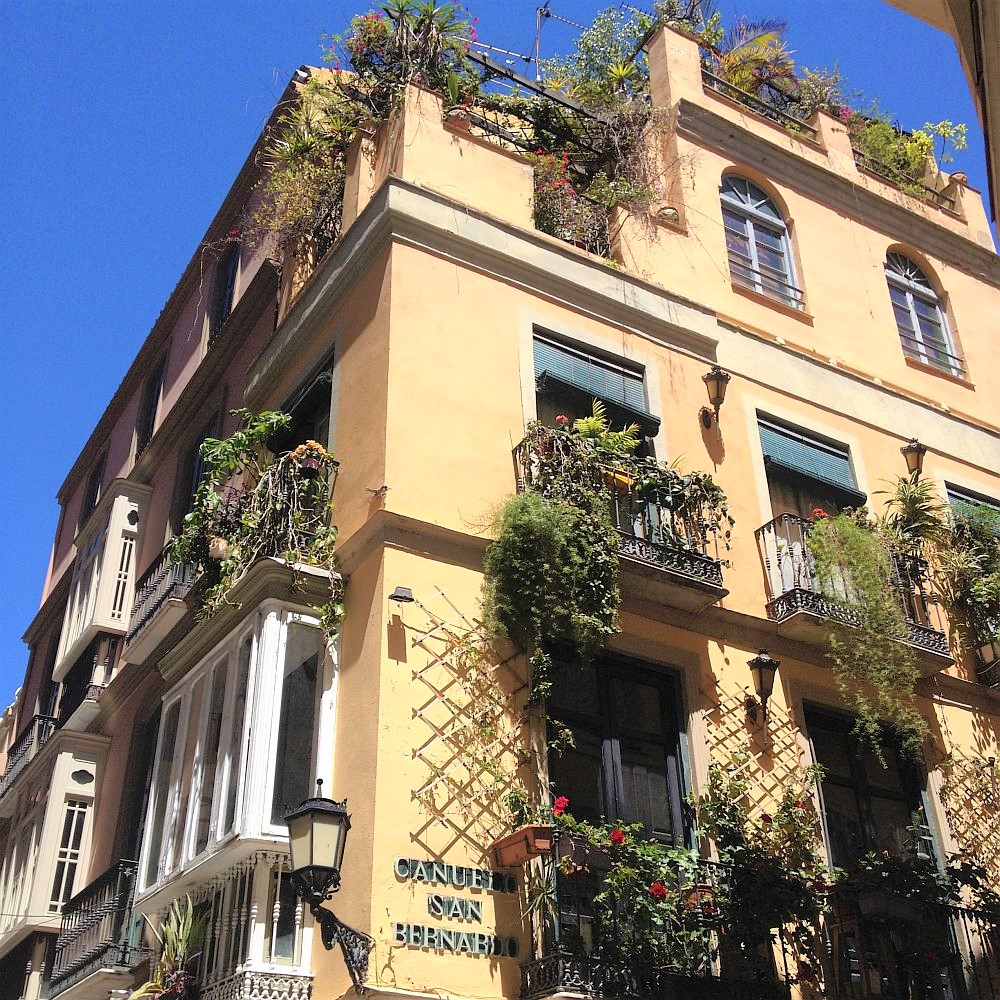
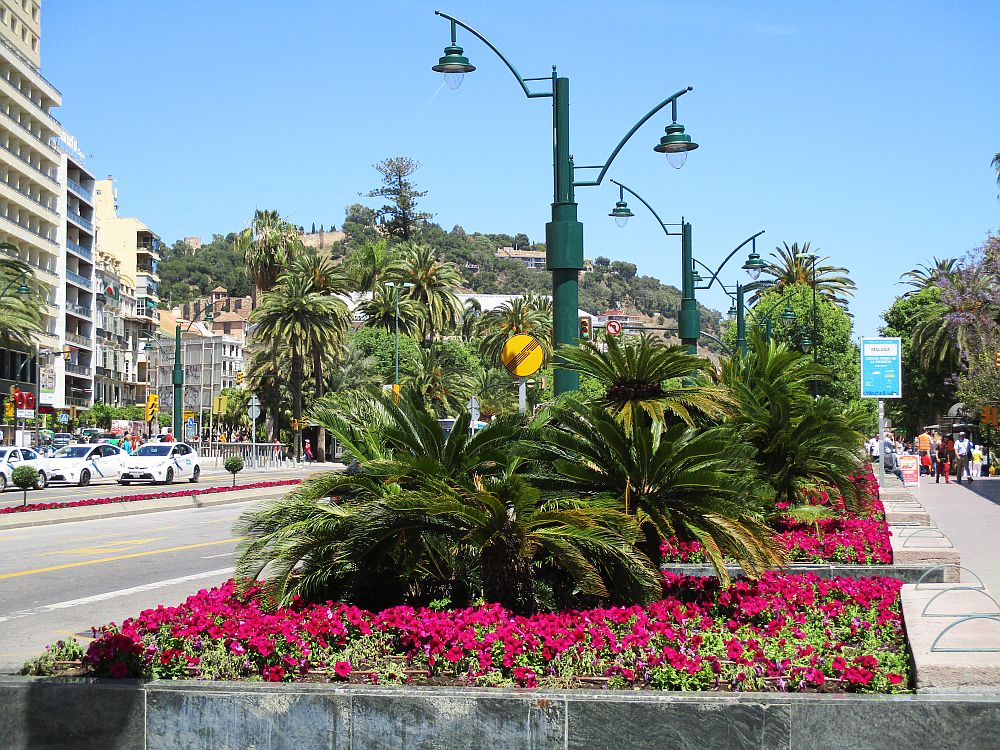
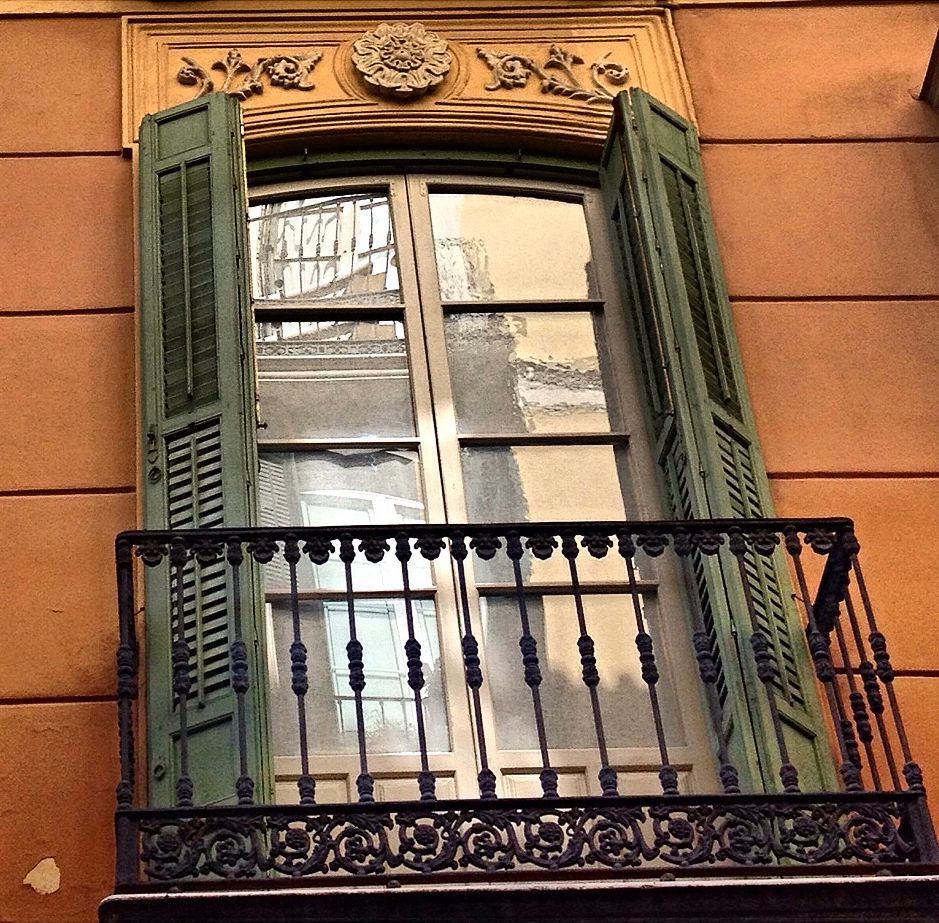
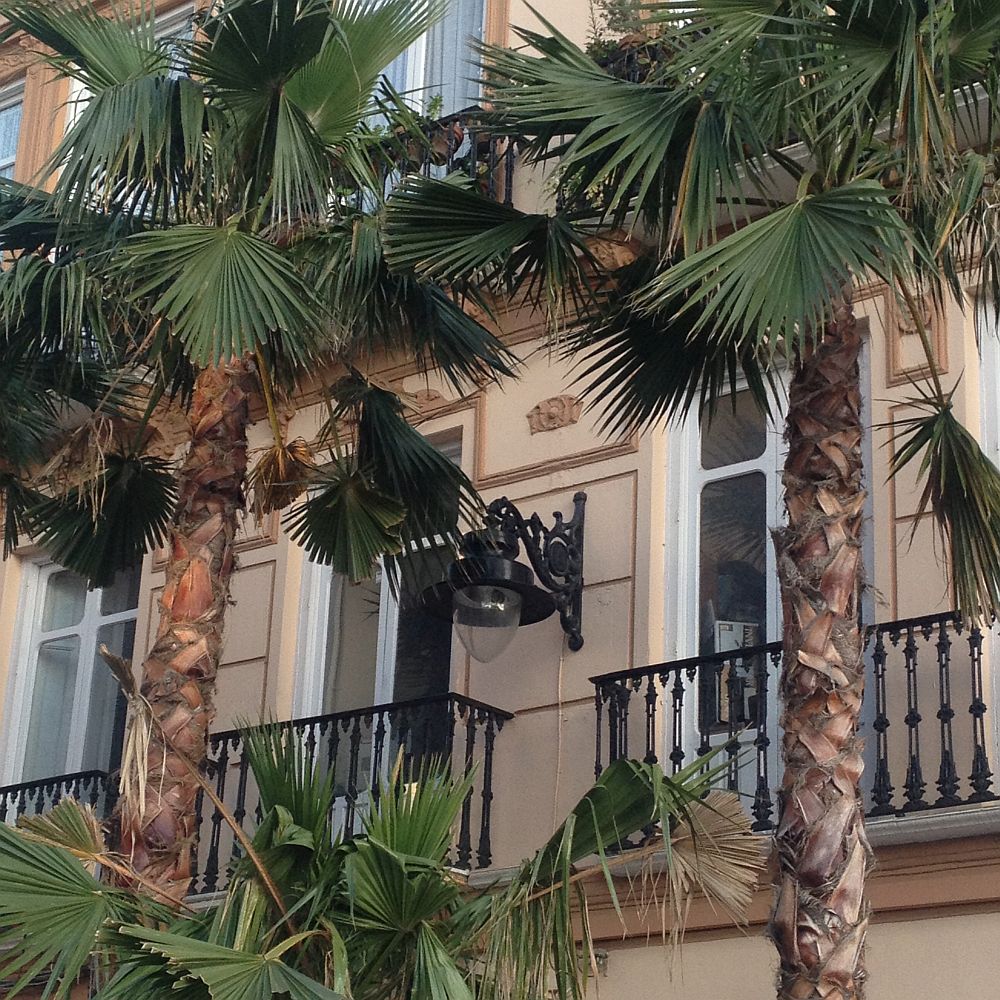
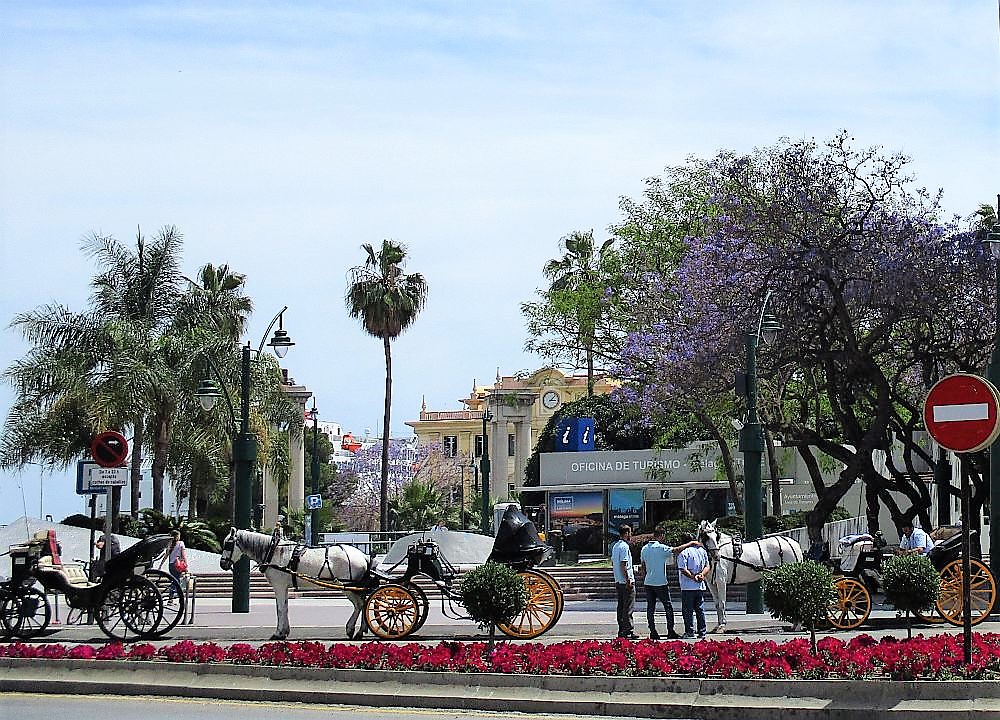
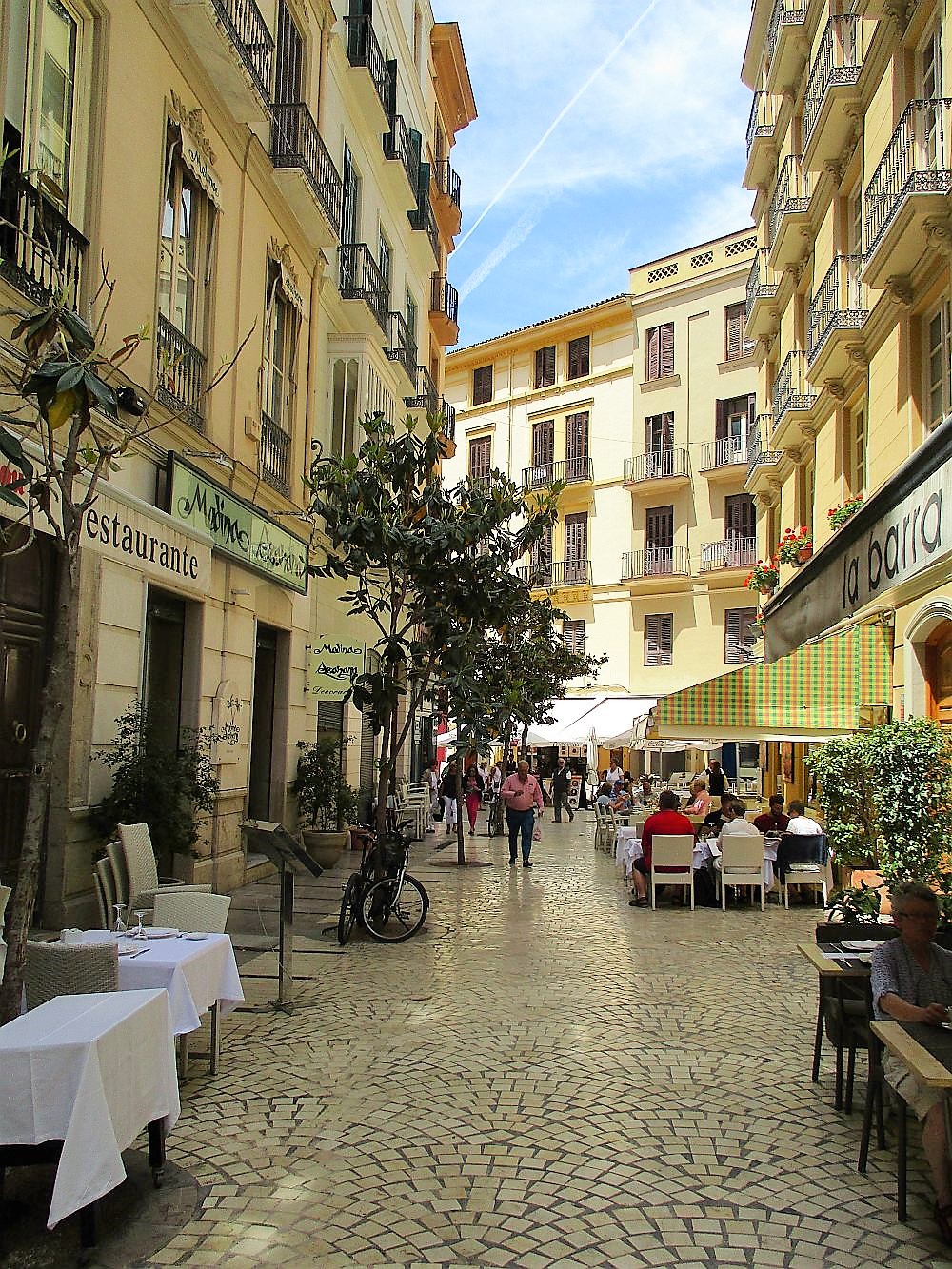
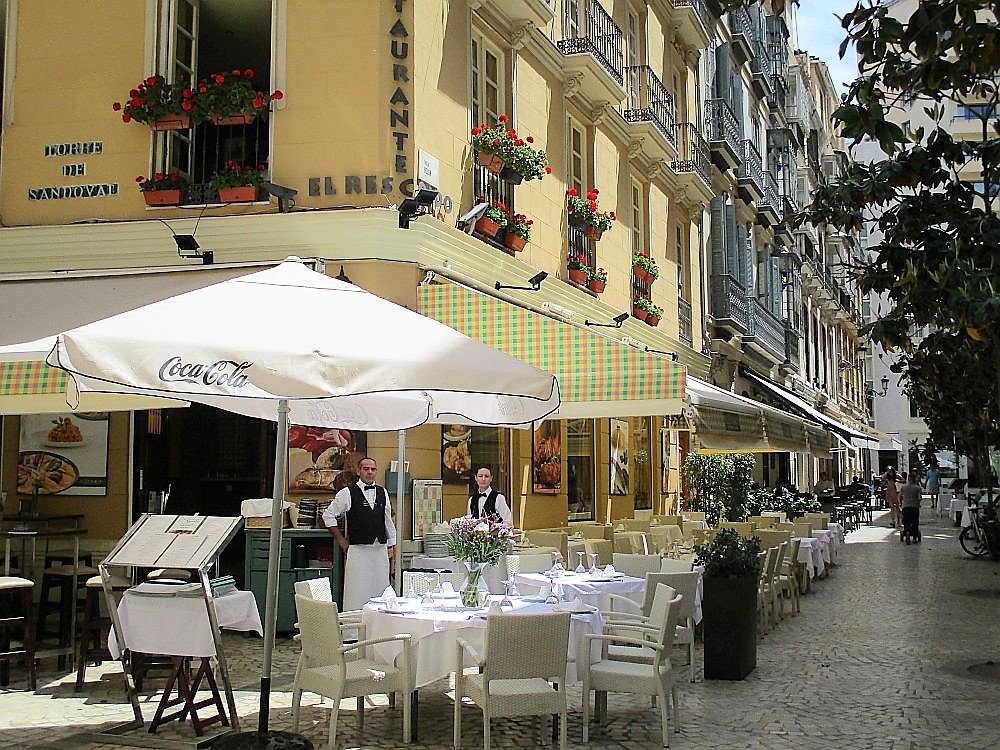

Photo credits: personal archive Ruxandra Chiurtu